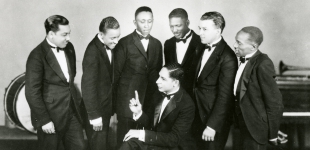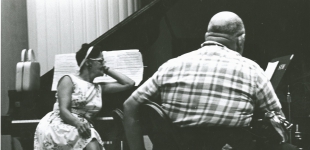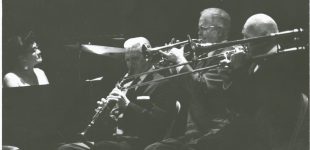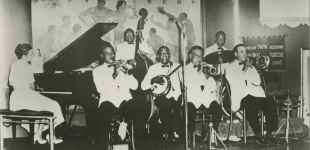By the time of the Louisiana Purchase in 1803, New Orleans was already a music city, offering bals masqués, opera and ballet, military parades with brass bands, choral masses, and virtually nonstop street serenading-all of which coalesced to give birth to jazz. Most people think of New Orleans jazz as a single original jazz idiom, or musical style, when in fact it retains distinctive stylistic features tied to festival traditions within a discrete, regional culture. Even today, the musical practices rooted in neighborhood and family affiliations often influence musical styles and trends among traditional and modern jazz musicians more than national market trends.
K-12 EDUCATOR RESOURCES
Discover teaching strategies for your classroom.Investigate one of these Lines of Inquiry
-
Photos
-
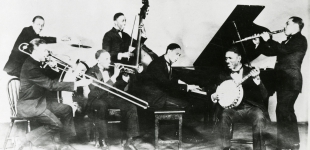
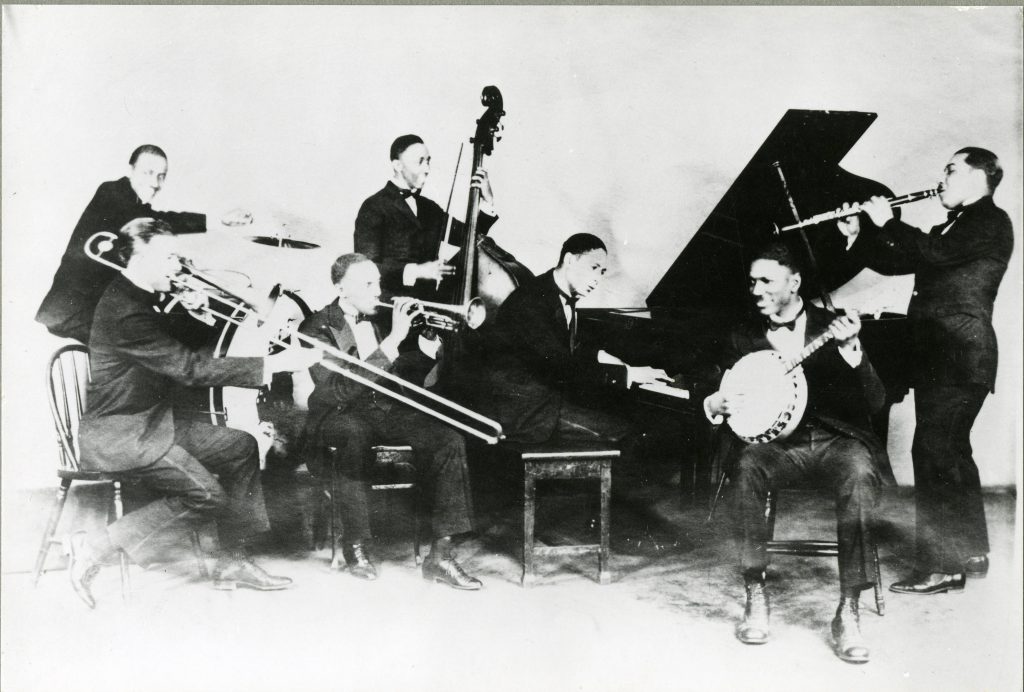
Jelly Roll Morton His Red Hot Peppers, 1926 -
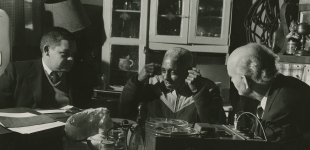
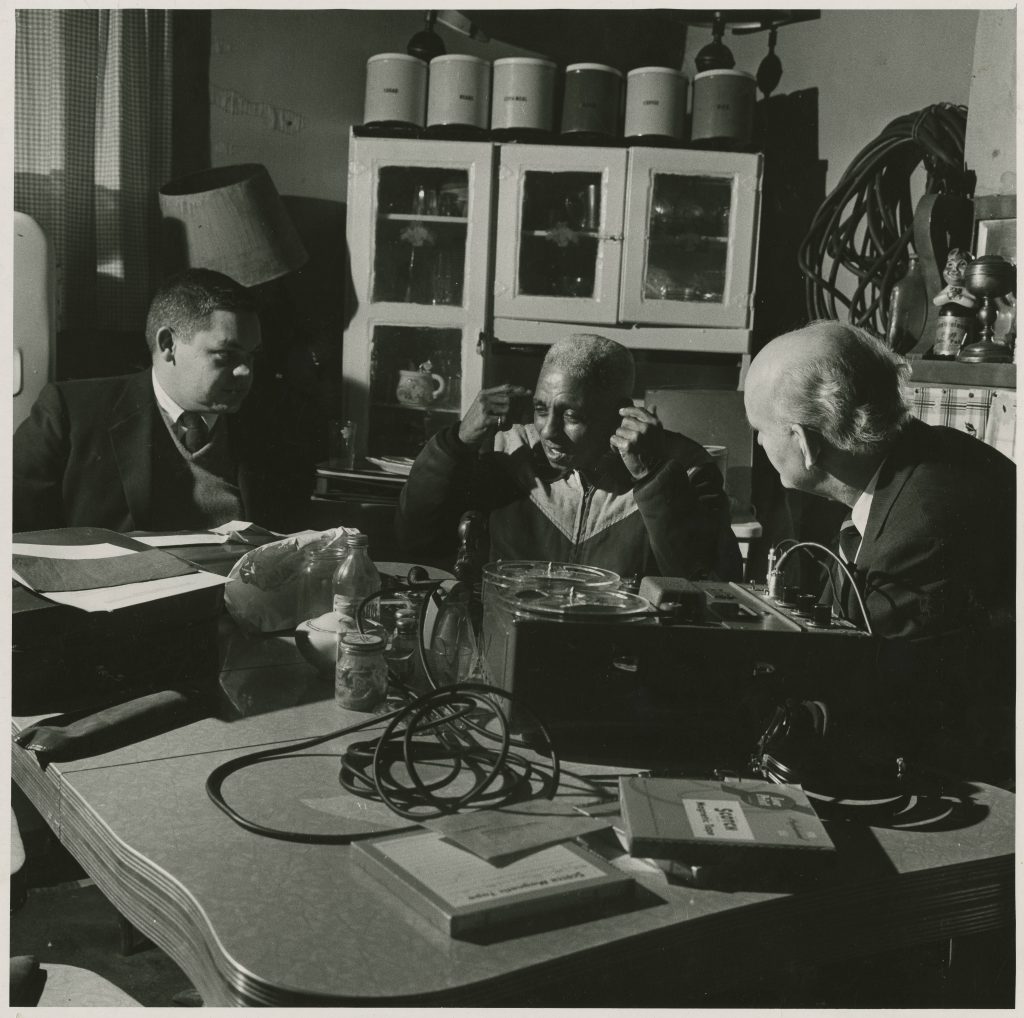
Alcide "Slow Drag" Pavageau with Richard B. Allen and William Russell; during interview for Ford Foundation-910 Burgundy Street (his home); 1958-12-10; Photo Credit: William Simmons -
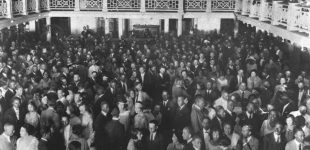
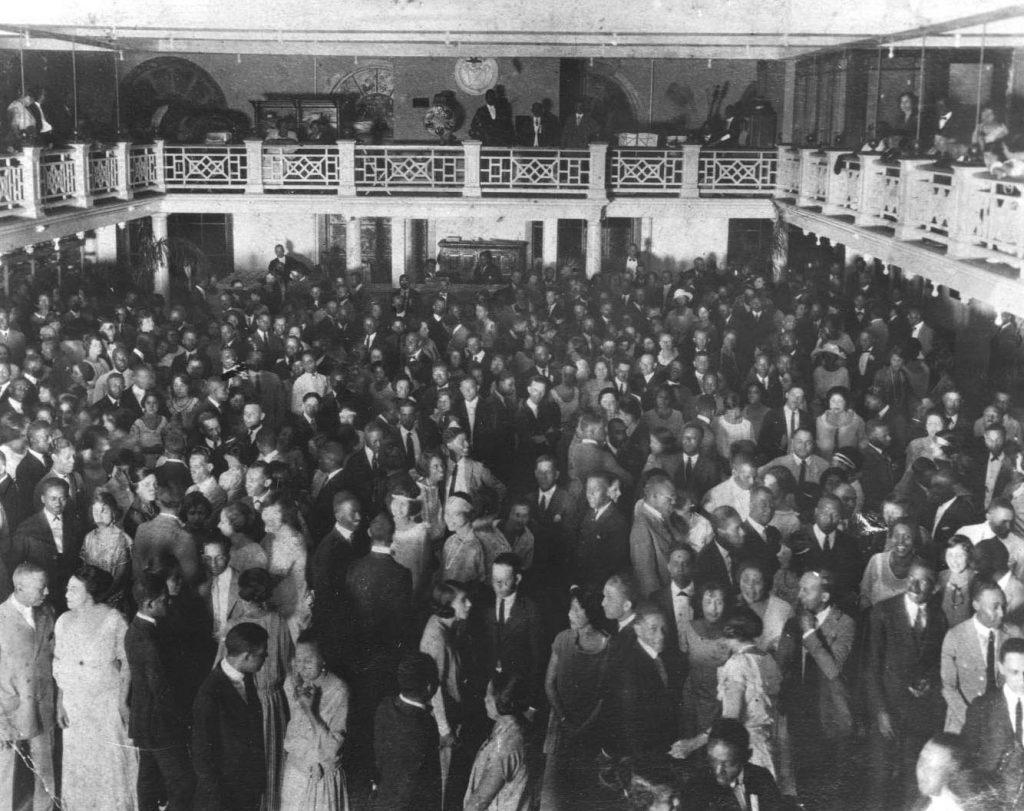
Pythian Roof dance floor Image Credit: Courtesy of Hogan Jazz Archive, Tulane University
Traditional Jazz Line of InquiryWhat do people mean when they say that New Orleans is the “Birthplace of Jazz?”
Videos
Profiles
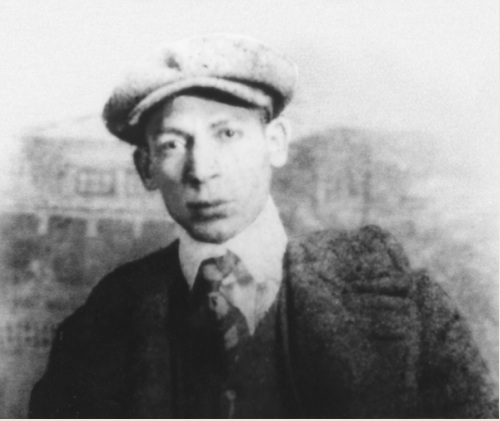
Ferdinand "Jelly Roll" Morton 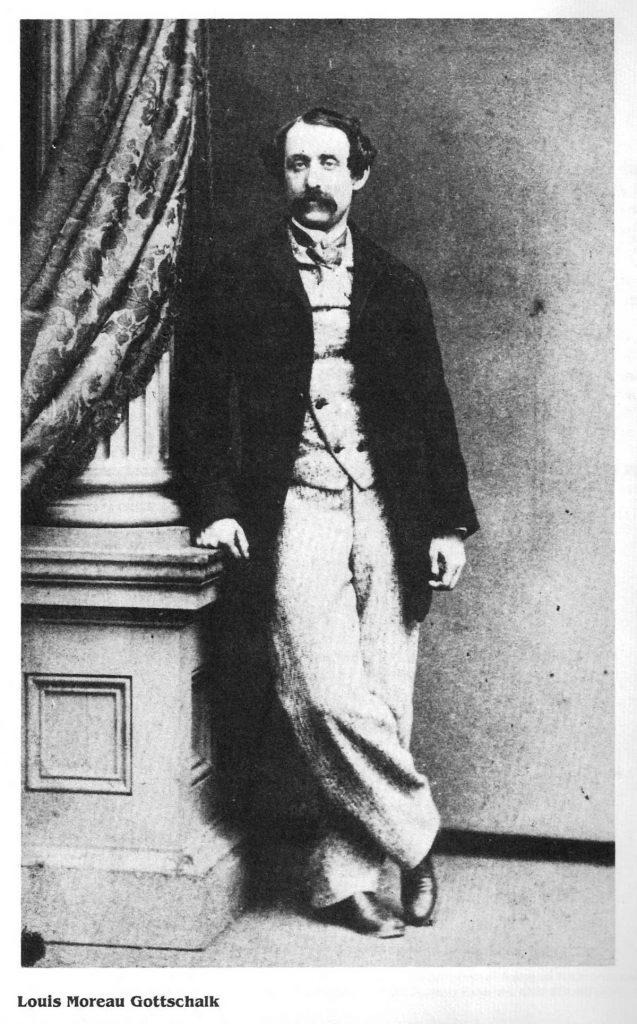
Louis Moreau Gottschalk 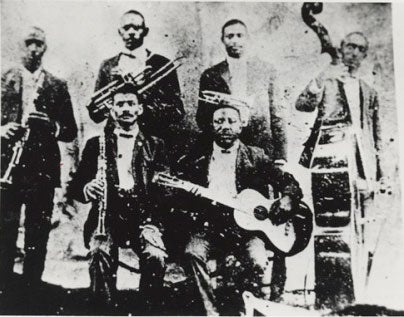
Charles "Buddy" Bolden 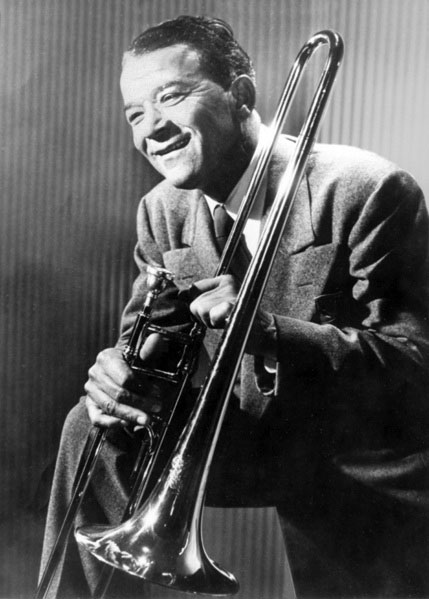
Edward "Kid" Ory 
Joe King Oliver 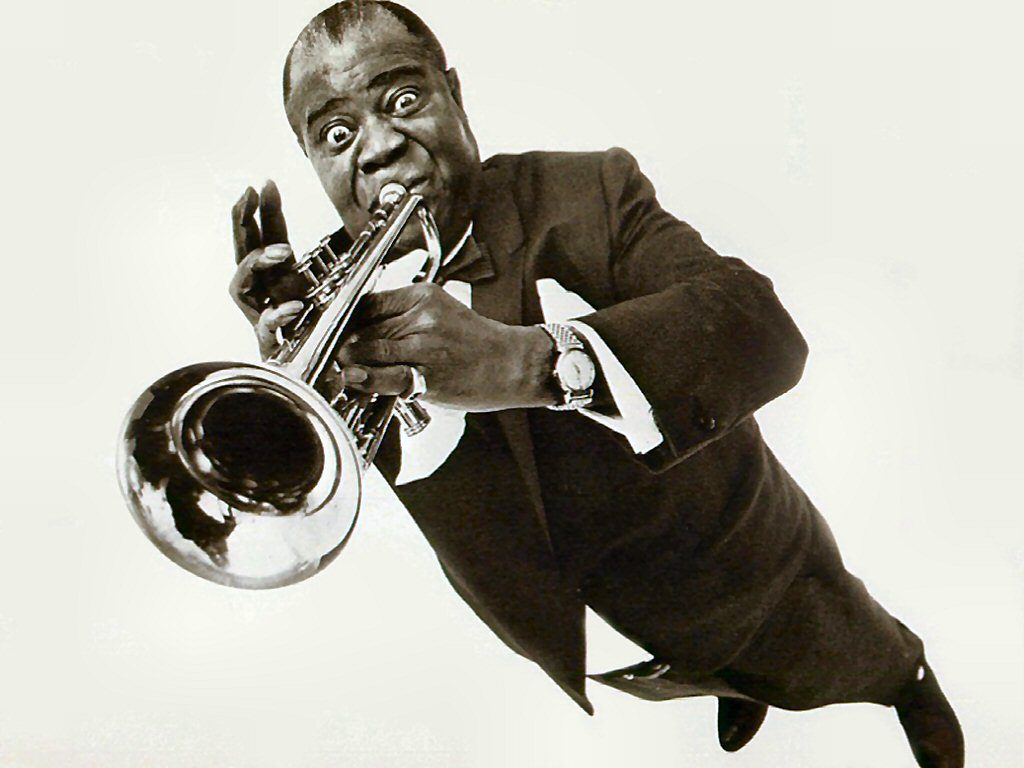
Louis Armstrong "Satchmo" 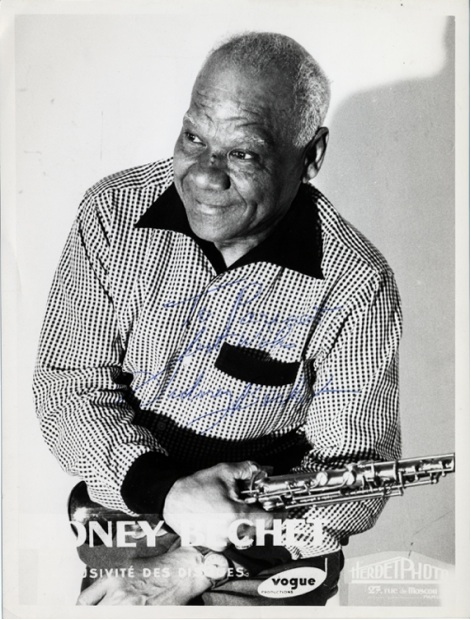
Sidney Bechet 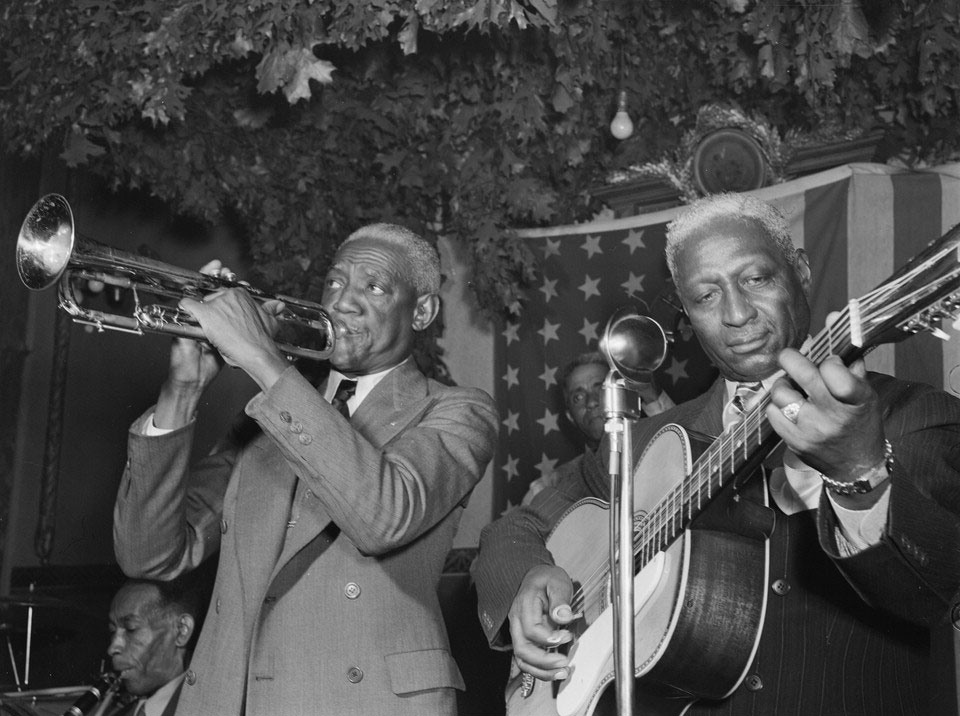
Alcide "Slow Drag" Pavageau 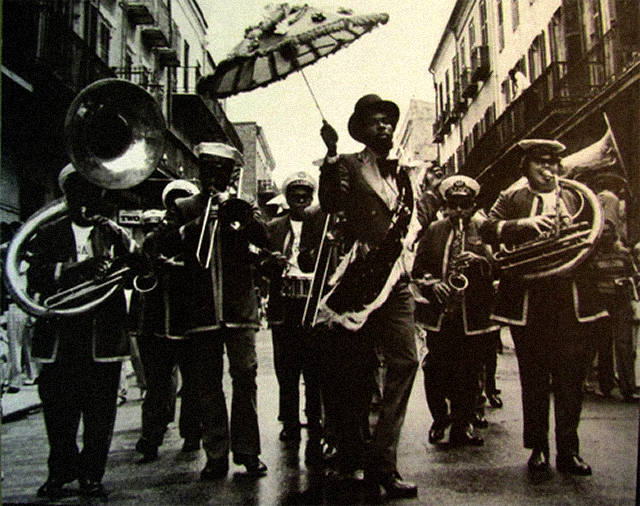
Olympia Brass Band
Teaching Strategies
-
-
Explore
Which of these audio and visual resources will activate imagination and draw students into this investigation?
Photos
-
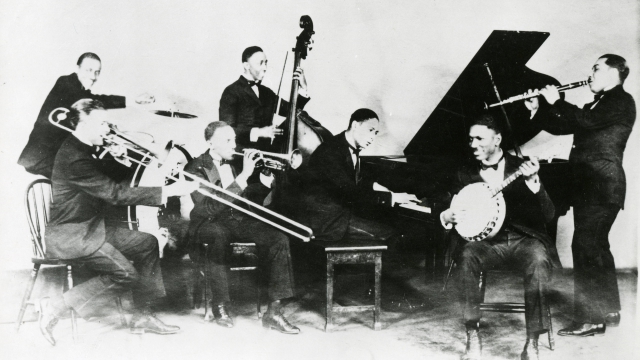
Jelly Roll Morton His Red Hot Peppers, 1926 -
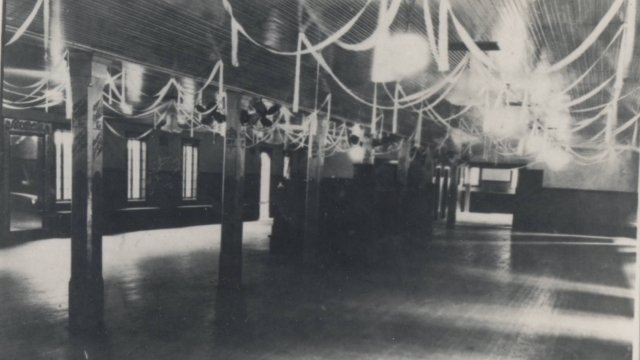
San Jacinto; 1436 Dumaine, New Orleans; dance hall; Image Credit: Courtesy of Hogan Jazz Archive, Tulane University
Audio
Videos
Profiles
-
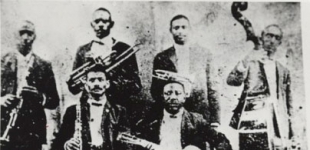
Charles "Buddy" Bolden -
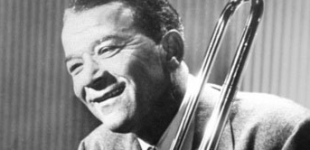
Edward "Kid" Ory -
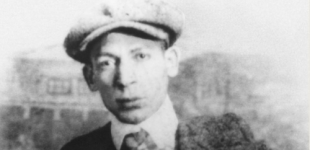
Ferdinand "Jelly Roll" Morton -
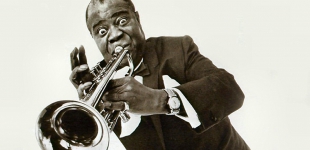
Louis Armstrong "Satchmo" -

Louis Moreau Gottschalk -
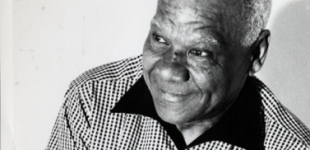
Sidney Bechet
Links & Documents
-
-
Engage
What activities will lead students into finding answers through this line of inquiry?
Activity One
In the “Audio” Section of the resources for the teaching strategy, you will notice numbered musical examples. These are designed to take your students on a journey from the more formal dances popular in the later 1800s and early 1900s in New Orleans, to the emergence of early Jazz in the city.
- Ask students to listen to the first example, and imagine how they would move to this music if they were at a dance. How would the dancers hold their shoulders? Their arms? How would they move their feet? How close would they dance to their partner?
- As students become more comfortable, ask them to stand up and try to move their upper body in a way that matches the music. When they are ready, ask them to try to move through the space in a way that matches the music.
- As you prepare a shared graphic organizer for the class, tell students that together you are going to compare and contrast the music of several different dances. Ask students to help you determine a visual representation of the first example, and some descriptive words to explain the dance they are imagining.
- Over the course of a few class periods, build more descriptions for each dance. Have students make observations about how the music is the same or different, and to consider what is changing in the music.
-
Connect
How do these investigations support other academic goals and objectives?
Curricular Connections Transferable skill: Compare and contrast the most important points presented by two texts on the same topic.
-
Reflect & Assess
How will you know what your students have learned?
Sample Reflection or Assessment Ask students to decide where to draw a line on the graphic organizer, to indicate where the music changed from one style to the next. Facilitate a conversation about how styles of music and dance change over time, and sometimes overlap.
In New Orleans, all of these styles might have been heard within 20 years or so at the turn of the 20th century. Ask students to consider how styles of music and dance are changing today.
-
-
-
Explore
Which of these audio and visual resources will activate imagination and draw students into this investigation?
Photos
-
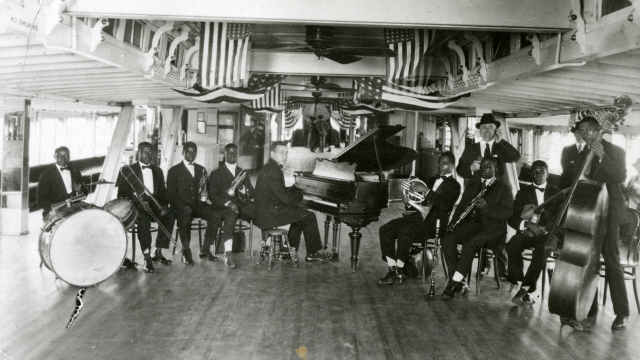
Fate Marable Band, 1918 or 1919; Image Credit: Courtesy of Hogan Jazz Archive, Tulane University -

Jelly Roll Morton and His Red Hot Peppers, 1926; Image Credit: Courtesy of Hogan Jazz Archive, Tulane University -
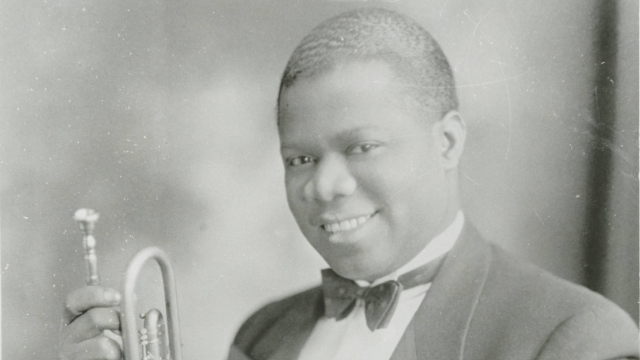
Louis Armstrong; Okeh Catalogue 1925; Image Credit: Courtesy of Hogan Jazz Archive, Tulane University -
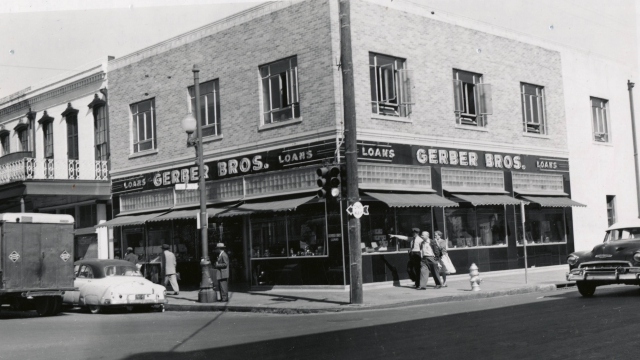
The Red Onion Saloon; Image Credit: Courtesy of Hogan Jazz Archive, Tulane University -
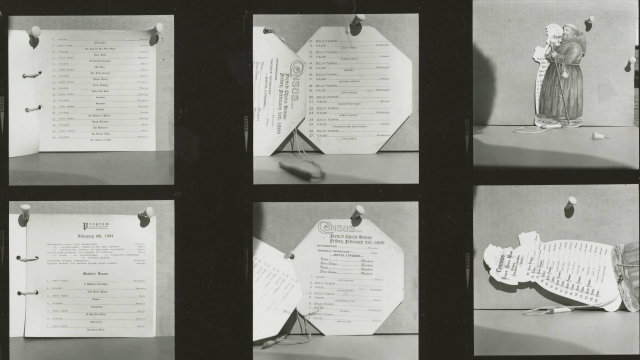
Dancing; Consus Dance Programs; Image Credit: Courtesy of Hogan Jazz Archive, Tulane University -
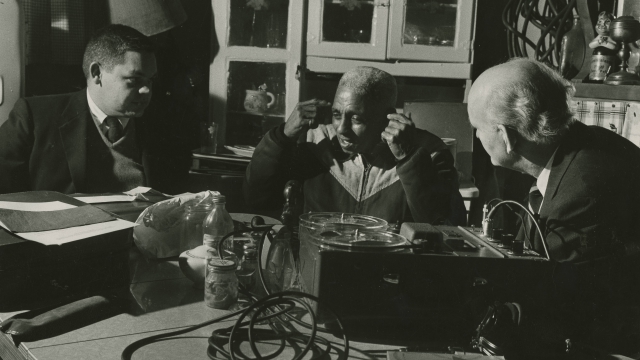
Alcide "Slow Drag" Pavageau with Richard B. Allen and William Russell; during interview for Ford Foundation-910 Burgundy Street (his home); 1958-12-10; Photo Credit: William Simmons -
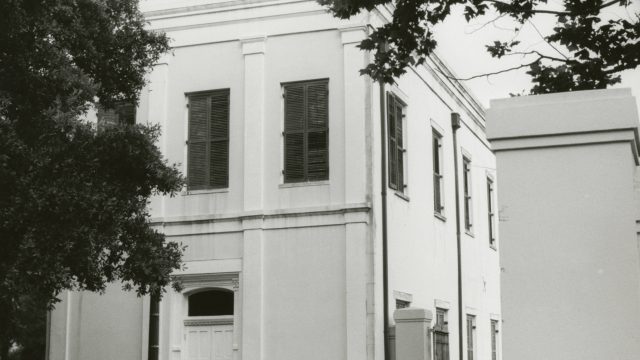
Perseverance No. 4; Image Credit: Courtesy of Hogan Jazz Archive, Tulane University -
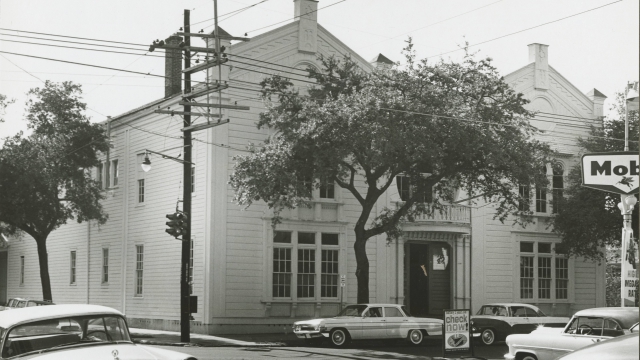
Crescent Dance Hall; Buildings: Crescent Dance Hall (now Behrman Gym). 1961; Image Credit: Courtesy of Hogan Jazz Archive, Tulane University
Audio
Videos
Profiles
-

Alcide "Slow Drag" Pavageau -

Ferdinand "Jelly Roll" Morton -

Louis Armstrong "Satchmo" -

Sidney Bechet
Links & Documents
-
-
Engage
What activities will lead students into finding answers through this line of inquiry?
Activity One
In the “Audio” Section of the resources for the teaching strategy, you will notice numbered musical examples. These are designed to take your students on a journey from the more formal dances popular in the later 1800s and early 1900s in New Orleans, to the emergence of early Jazz in the city.
- Ask students to listen to the first example, and imagine how they would move to this music if they were at a dance. How would the dancers hold their shoulders? Their arms? How would they move their feet? How close would they dance to their partner?
- As students become more comfortable, ask them to stand up and try to move their upper body in a way that matches the music. When they are ready, ask them to try to move through the space in a way that matches the music.
- As you prepare a shared graphic organizer for the class, tell students that together you are going to compare and contrast the music of several different dances. Ask students to help you determine a visual representation of the first example, and some descriptive words to explain the dance they are imagining.
- Over the course of a few class periods, build more descriptions for each dance. Have students make observations about how the music is the same or different, and to consider what is changing in the music.
-
Connect
How do these investigations support other academic goals and objectives?
Curricular Connections Transferable skill: Compare and contrast the most important points presented by two texts on the same topic.
-
Reflect & Assess
How will you know what your students have learned?
Sample Reflection or Assessment Ask students to decide where to draw a line on the graphic organizer, to indicate where the music changed from one style to the next. Facilitate a conversation about how styles of music and dance change over time, and sometimes overlap.
In New Orleans, all of these styles might have been heard within 20 years or so at the turn of the 20th century. Ask students to consider how styles of music and dance are changing today.
-
-
-
Explore
Which of these audio and visual resources will activate imagination and draw students into this investigation?
Photos
-

Louis Armstrong, 1931 Image Credit: Courtesy of Hogan Jazz Archive, Tulane University -
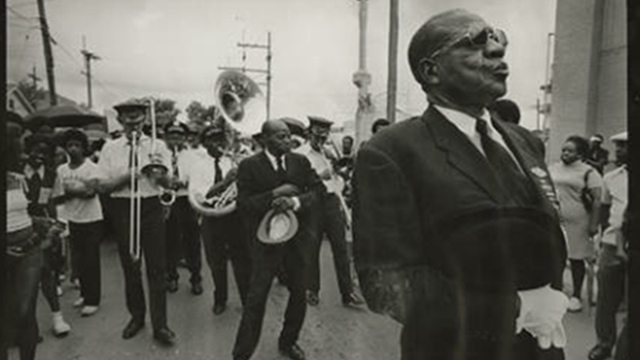
Olympia Brass Band Photo: Michael P. Smith; Courtesy of Hogan Jazz Archive, Tulane University -
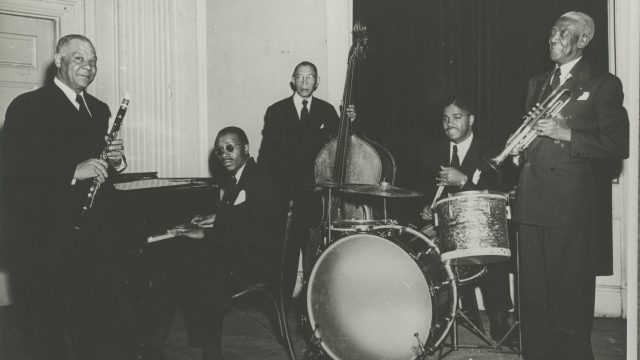
Sidney Bechet Band, 1945; Image Credit: Courtesy of Hogan Jazz Archive, Tulane University -
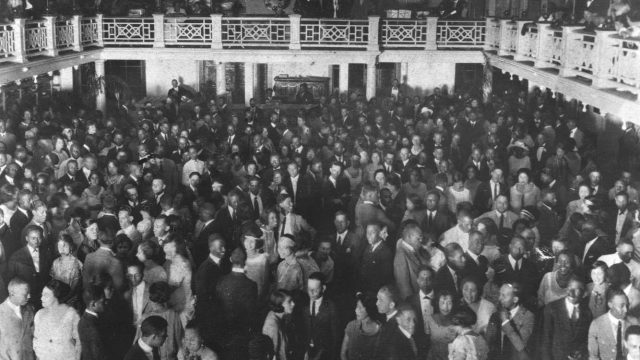
Pythian Roof dance floor Image Credit: Courtesy of Hogan Jazz Archive, Tulane University -
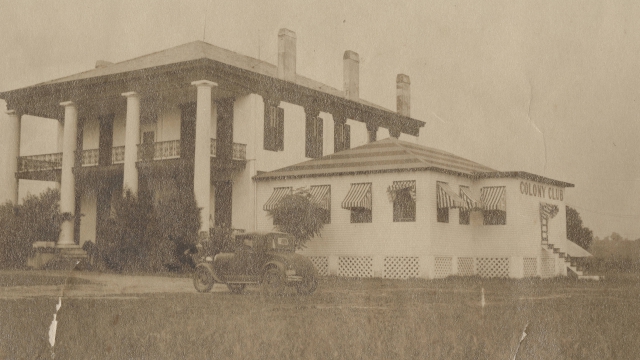
Colony Club Image Credit: Al Rose Collection/Hogan Jazz Archive -

The District, #12 Image Credit: The District, #12 -

Longshoreman’s Hall Image Credit: Courtesy of Hogan Jazz Archive created by William Russell
Videos
Profiles
-

Olympia Brass Band -

Ferdinand "Jelly Roll" Morton -

Louis Armstrong "Satchmo" -

Sidney Bechet
Links & Documents
-
-
Engage
What activities will lead students into finding answers through this line of inquiry?
Activity One
- Introduce the article provided in the resources section of this teaching strategy: Evolution of a Cultural Tradition (Louisiana Cultural Vistas, Winter 1991).
- Ask students to read pages 19-21 (beginning with Music in Constant Demand), and to consider the social and political environment in New Orleans during the Reconstruction era. Facilitate a discussion around the emergence of jazz after that time period.
- Utilize the photos in this teaching strategy to prompt a discussion around the dance scene in New Orleans at the turn of the 20th century. Where did musicians play, and who attended?
- Ask students to select one element of the article to research further. Aligned with your curricula, develop protocols for research.
- Ask students to prepare a multi-media presentation that incorporate images, audio examples, and video to present the environment of New Orleans during the emergence of jazz.
-
Connect
How do these investigations support other academic goals and objectives?
Curricular Connections Deeply examine policy issues in group discussions and debates (clarify issues, consider opposing views, apply democratic values or constitutional principles, anticipate consequences) to make reasoned and informed decisions.
-
Reflect & Assess
How will you know what your students have learned?
Sample Reflection or Assessment Create a written assessment that demonstrates understanding of the content presented by students.
-
-
-
Photos
-
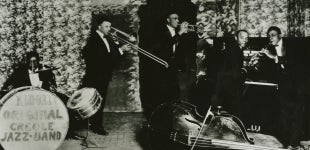
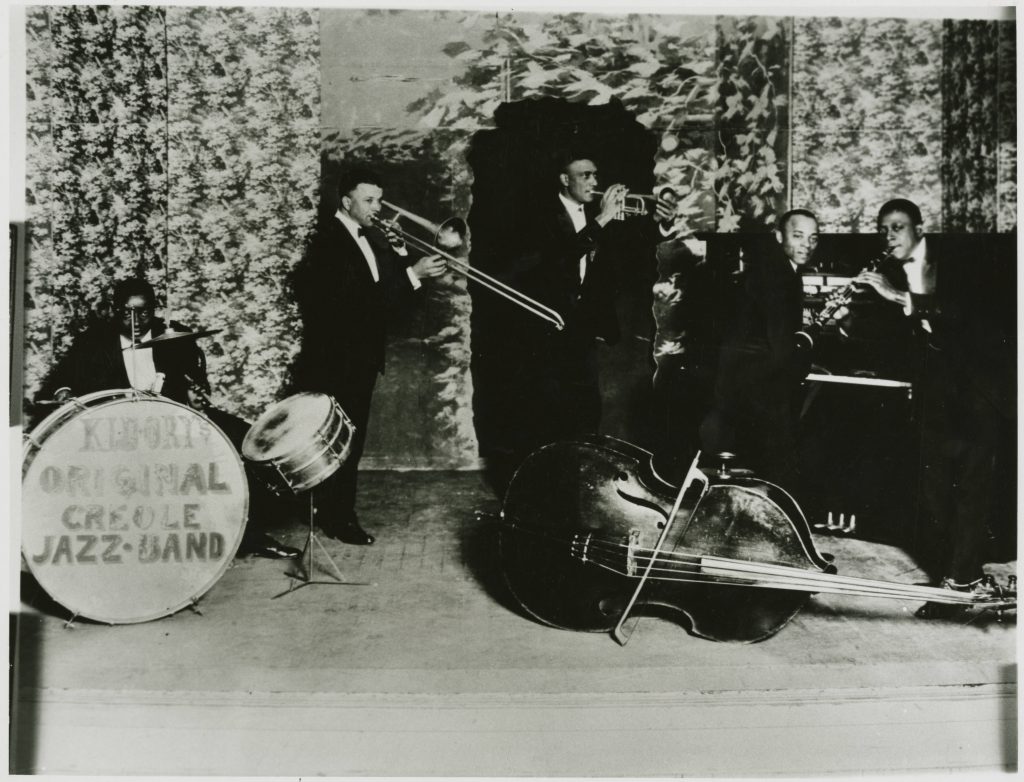
Kid Ory's Original Creole Jazz Band Courtesy of Hogan Jazz Archive, Tulane University -
!['Papa' Albert French's Band Alvin Alcorn, Joseph 'Brother Cornbread' Thomas, Louis Barbarin, and Jeanette Kimball. Summer 1964 - [Dixieland Hall ?] Courtesy of Hogan Jazz Archive, Tulane University](https://musicrising.tulane.edu/wp-content/uploads/sites/3/2018/10/traditional-jazz-19-310x150.jpg)
!['Papa' Albert French's Band Alvin Alcorn, Joseph 'Brother Cornbread' Thomas, Louis Barbarin, and Jeanette Kimball. Summer 1964 - [Dixieland Hall ?] Courtesy of Hogan Jazz Archive, Tulane University](https://musicrising.tulane.edu/wp-content/uploads/sites/3/2018/10/traditional-jazz-19-819x1024.jpg)
'Papa' Albert French's Band Alvin Alcorn, Joseph 'Brother Cornbread' Thomas, Louis Barbarin, and Jeanette Kimball. Summer 1964 - [Dixieland Hall ?] Courtesy of Hogan Jazz Archive, Tulane University -
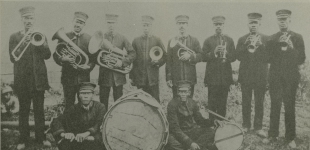
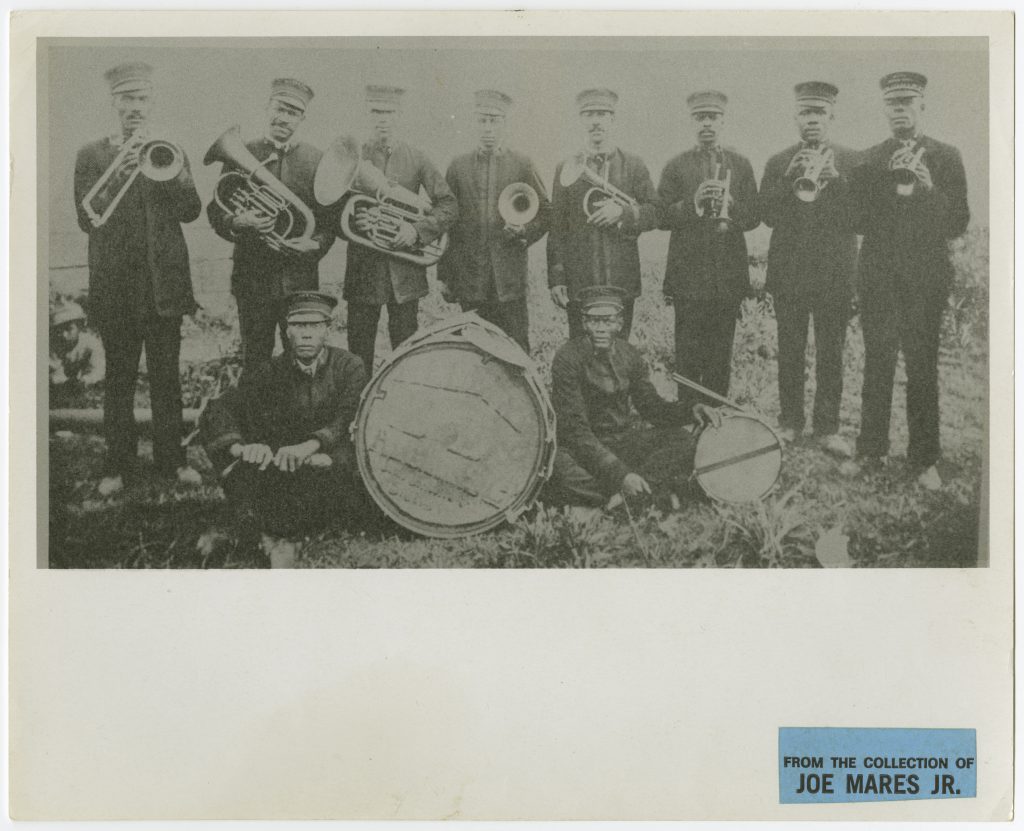
Henry Allen Brass Band Courtesy of Hogan Jazz Archive, Tulane University
Traditional Jazz Line of InquiryHow have specific bands and musicians shaped the development of this tradition?
Videos
Audio
Profiles
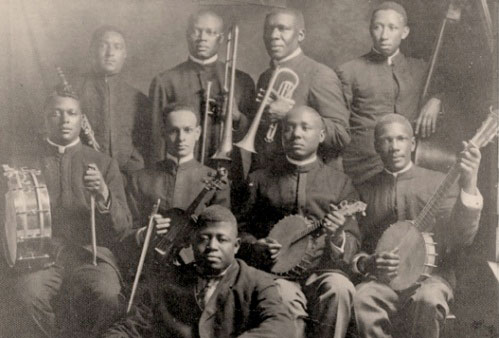
Tuxedo Band 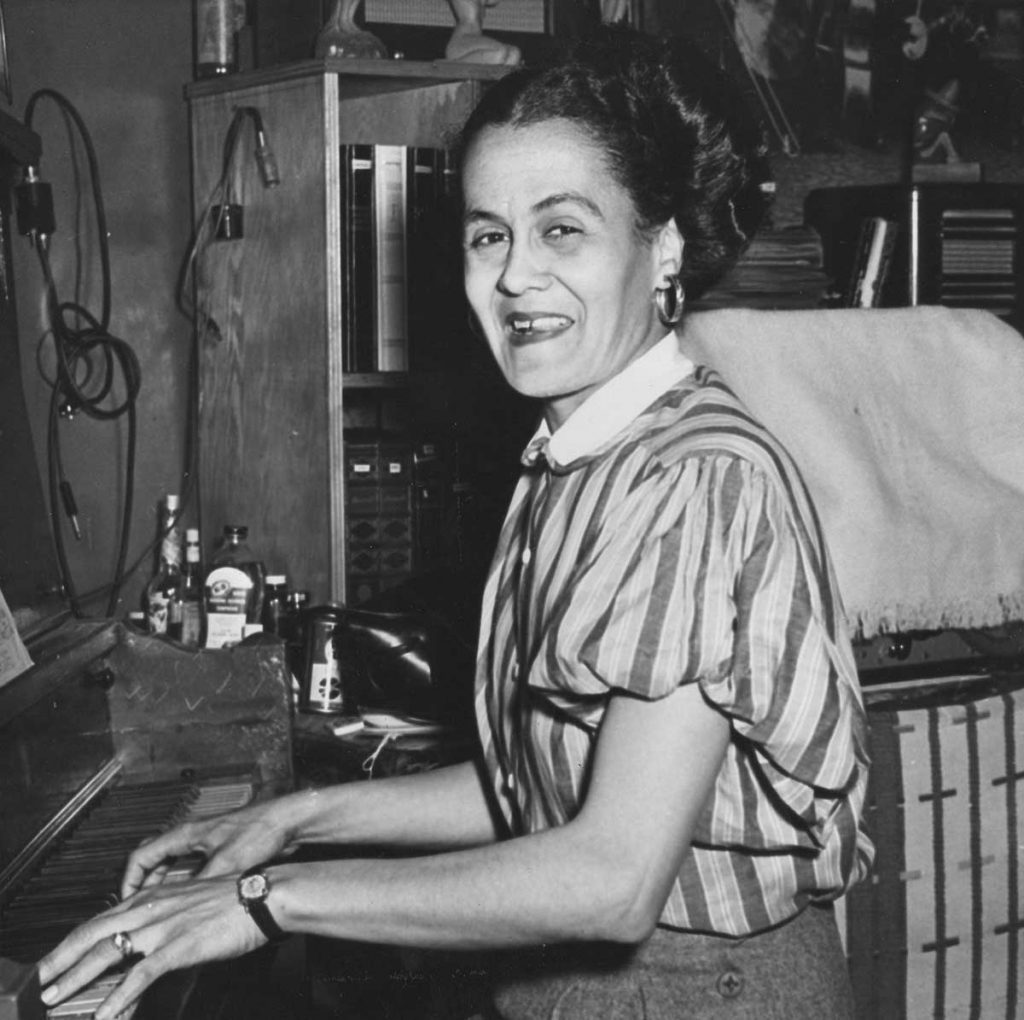
Jeanette Kimball 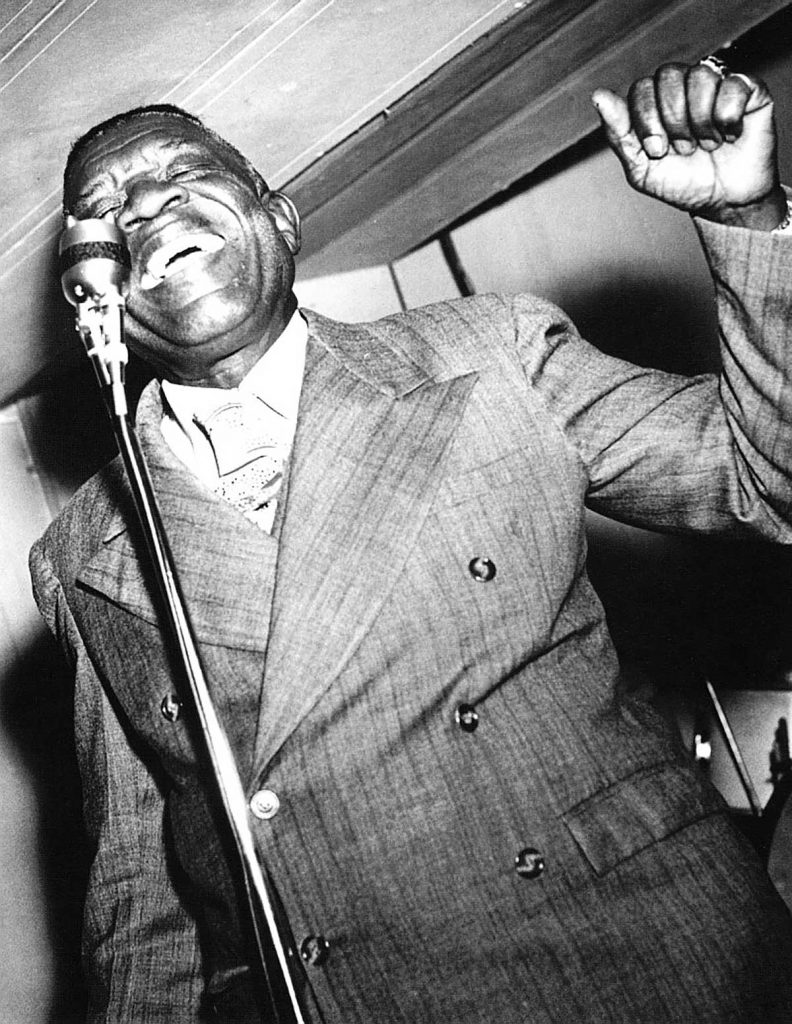
Papa Celestin 
Edward "Kid" Ory 
Joe King Oliver 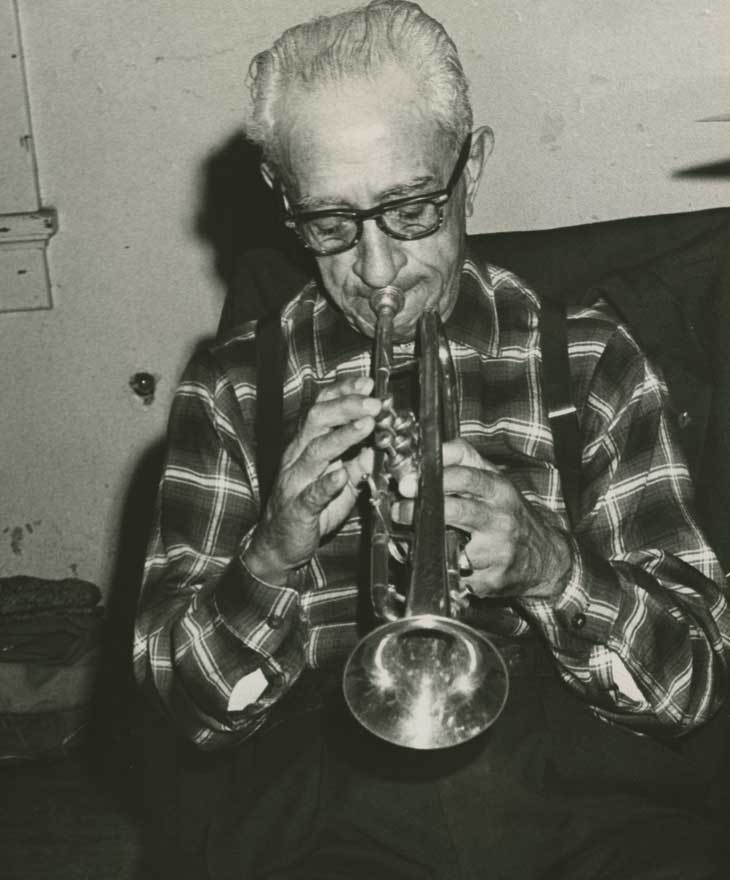
Peter Bocage 
Louis Armstrong "Satchmo" 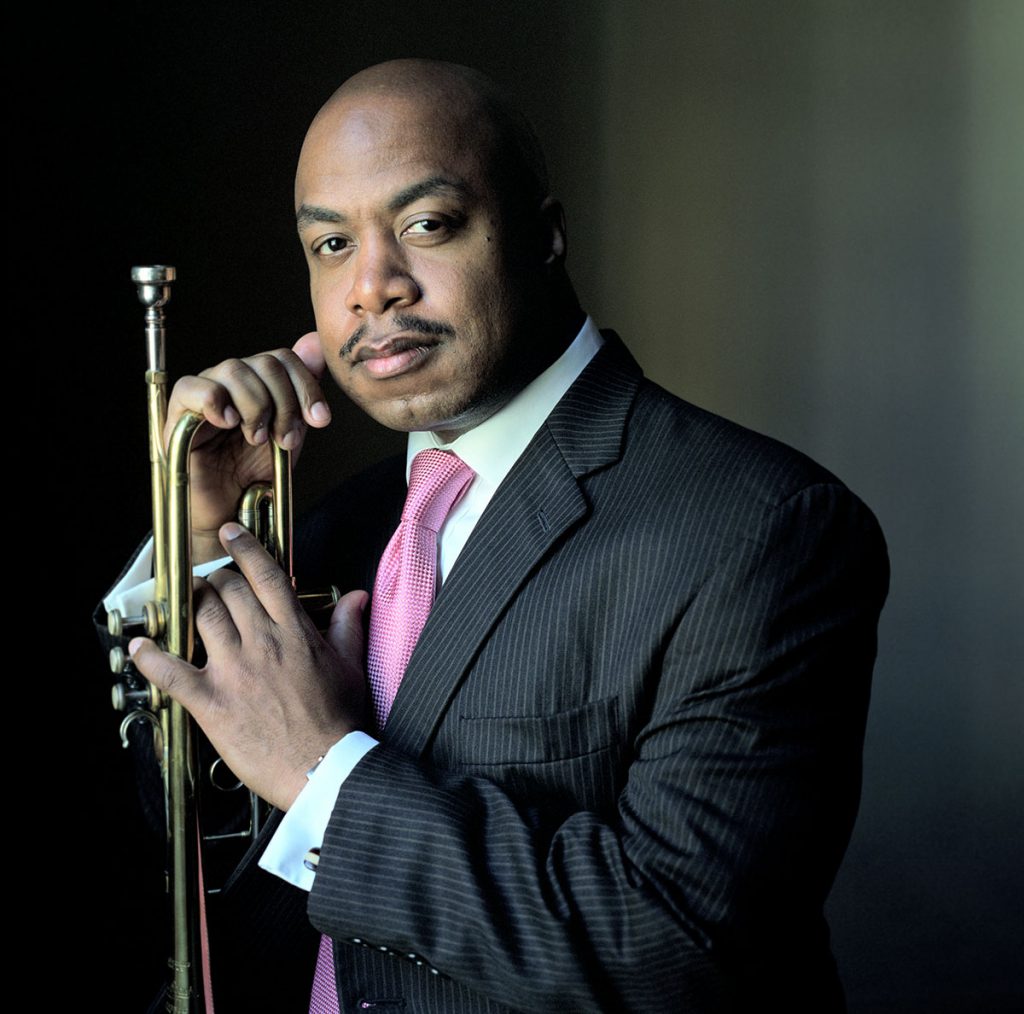
Nicholas Payton
Links & Documents
- Article: Traditional New Orleans Jazz
- Image: Tuxedo Jazz Band, 1916 (KnowLouisiana.org)
- Article: Joseph King Oliver (KnowLousiana)
- Image: Louis Armstrong First Coronet (KnowLousiana)
- Images: Preservation Hall
- Music Rising Course: MUSC 1900: New Orleans Music
- Music Rising Course: HISU 4694-01: The Creation of Jazz in New Orleans
- Music Rising Course: MUSC 3340: History of Jazz
Teaching Strategies
-
-
Explore
Which of these audio and visual resources will activate imagination and draw students into this investigation?
Photos
-
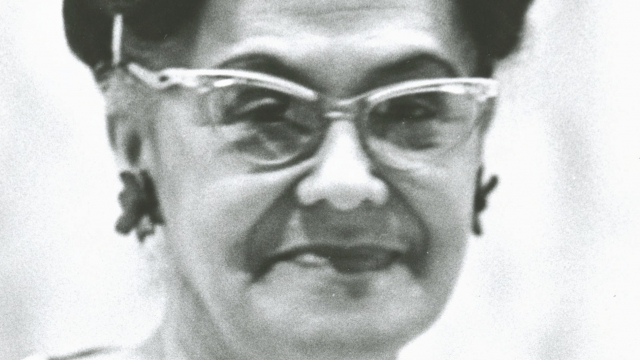
Jeanette Kimball Courtesy of Hogan Jazz Archive, Tulane University -
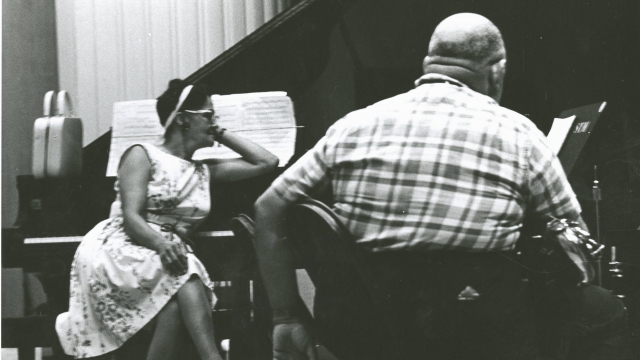
Jeanette Kimball Courtesy of Hogan Jazz Archive, Tulane University -
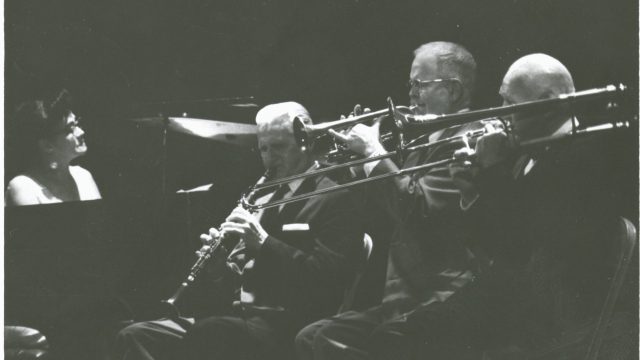
Jeanette Kimball Courtesy of Hogan Jazz Archive, Tulane University -

'Papa' Albert French's Band Alvin Alcorn, Joseph 'Brother Cornbread' Thomas, Louis Barbarin, and Jeanette Kimball. Summer 1964 - [Dixieland Hall ?] Courtesy of Hogan Jazz Archive, Tulane University -
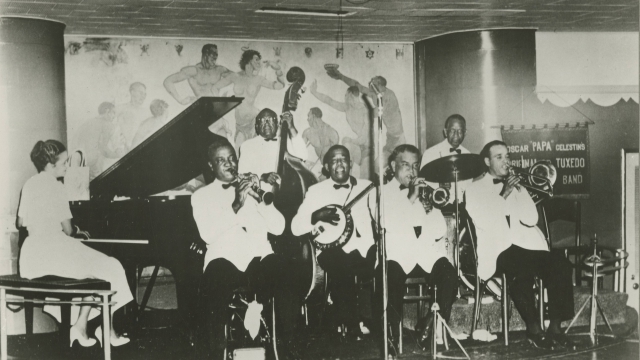
Papa Celestin's Original Tuxedo Orchestra; Jeanette Kimball, Joseph Thomas ('Brother Cornbread or 'Empty Mouth'), Sidney 'Jim Little' Brown, Albert French, Albert 'Fernandez' Walters, Louis Barbarin, Wendell Eugene. Dan's Pier 600, New Orleans, LA. circa 1959 Courtesy of Hogan Jazz Archive, Tulane University -
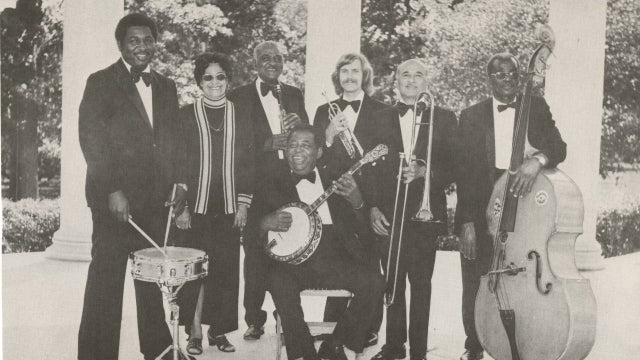
Albert Papa French's Original Tuxedo Band Courtesy of Hogan Jazz Archive, Tulane University -

Jeanette Kimball Courtesy of Hogan Jazz Archive, Tulane University
Audio
Videos
Profiles
-
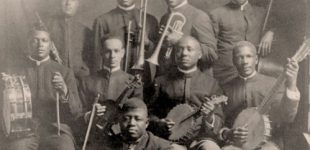
Tuxedo Band -
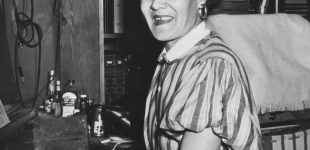
Jeanette Kimball -
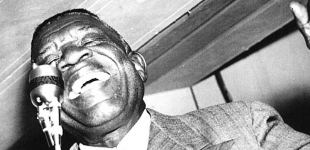
Papa Celestin
Links & Documents
-
-
Engage
What activities will lead students into finding answers through this line of inquiry?
Activity One
- Over the course of a week, listen to the (5) short oral history clips provided for Jeanette Kimball. Note: Oral History Clips to Come
- For each clip, ask students to identify the event from Kimball’s life, and provide an illustration with text on the storyboard provided. After each initial draft, ask them if they need to add any additional details and allow time for revision as necessary.
- At the end of the week, ask students to cut their storyboard into squares and re-order to show the correct sequence of Jeanette Kimball’s life.
Extension: In small groups, allow students to create a tableau for each element of the storyboard, and combine these into a “silent film.” Students should think of a way to transition from one tableau to the next, and should choose a soundtrack for their film from the earliest available recordings of the Tuxedo Jazz Band.
-
Connect
How do these investigations support other academic goals and objectives?
Curricular Connections Determine the main ideas and supporting details of a text read aloud or information presented in diverse media and formats, including visually, quantitatively, and orally.
-
Reflect & Assess
How will you know what your students have learned?
Sample Reflection or Assessment One week after these activities, provide students with only visual cues in a storyboard of Jeanette Kimball’s life. Ask students to order the sections, 1-5, and to add text with details about each event.
-
-
-
Explore
Which of these audio and visual resources will activate imagination and draw students into this investigation?
Photos
-
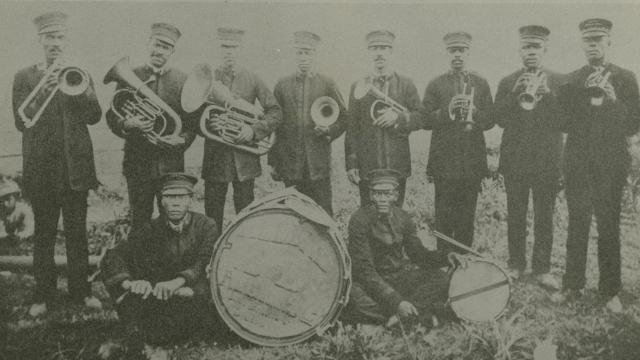
Henry Allen Brass Band Courtesy of Hogan Jazz Archive, Tulane University -
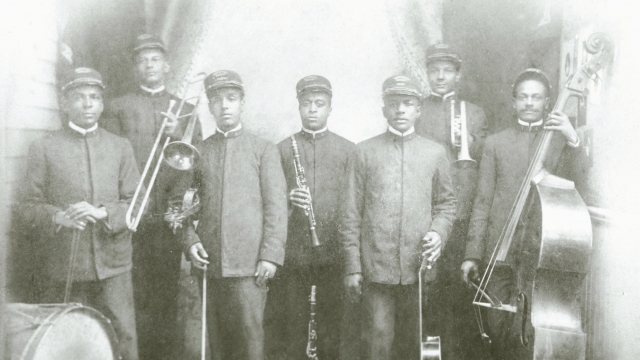
Imperial Band, circa 1908 Courtesy of Hogan Jazz Archive, Tulane University -
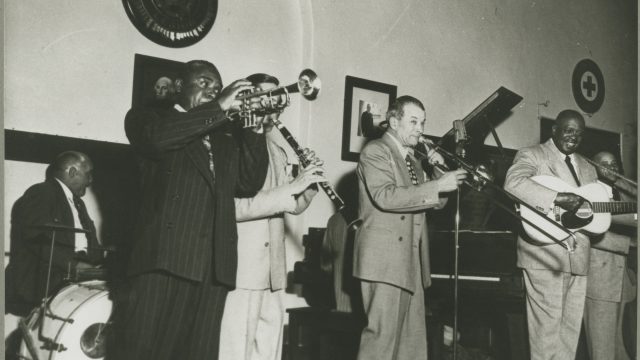
Kid Ory's Band Courtesy of Hogan Jazz Archive, Tulane University -
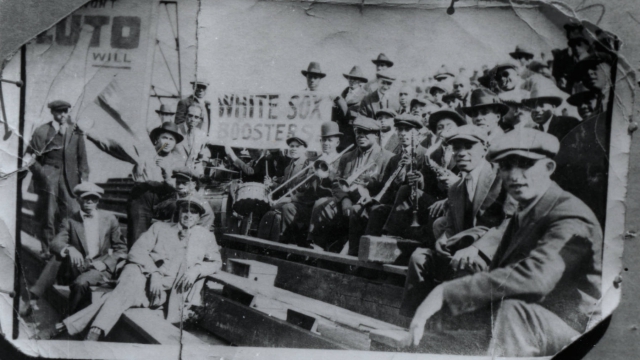
King Oliver Band Courtesy of Hogan Jazz Archive, Tulane University -

King Oliverʼs Creole Jazz Band Courtesy of Hogan Jazz Archive, Tulane University -

King Oliverʼs Dixie Syncopators, 1926 Courtesy of Hogan Jazz Archive, Tulane University -

Joe ʻKingʼ Oliver, 1916-1918 Courtesy of Hogan Jazz Archive, Tulane University -
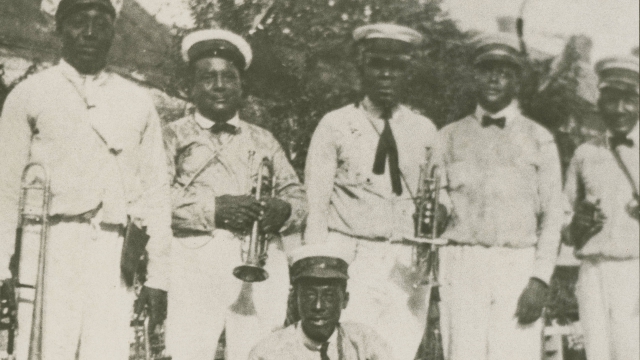
Original Tuxedo Brass Band, 1920 Courtesy of Hogan Jazz Archive, Tulane University -
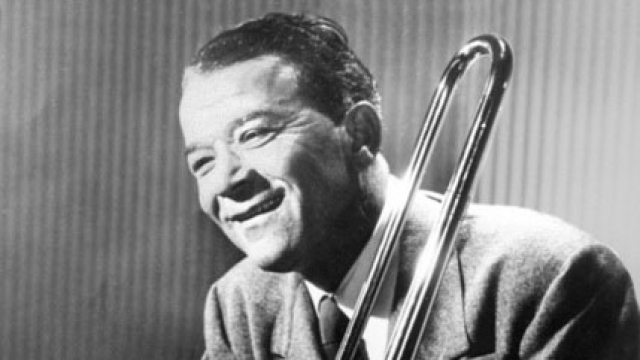
Edward ʻKidʼ Ory, Between 1946-1947 Courtesy of Hogan Jazz Archive, Tulane University
Audio
Audio: West End Blues, King Oliver (KnowLouisiana.org)
Peter Bocage Transcript:
Interviewer: Where did that boat run?
Bocage: Well that boat went all the way to Minnesota, you know?
Interviewer: Minnesota?
Bocage: Yeah, they’d go from town to town. First stop was Plaquemines, see, then from Plaquemines to Baton Rouge, then from Baton Rouge to Vicksburg. Then jumping up the river all at the same time. Then get into St. Louis, you see and go up in Missouri, all up in there, up the Ohio River. Evansville, Indiana, all you in there, then Red Wing Minnesota. It’s just a short distance from St. Paul you see, and I would turn around then, because they had a boat in St Paul you see, it’s stationary there.
Interviewer: Did you play all the time on the boat or did you get off the and play on shore at all?
Bocage: No, no, we just on the boat. We were under contract, we couldn’t play out.
Interviewer: Did you play just in the evenings ?
Boacge: Well, they had day trips too, you know, every night.
Videos
Profiles
-

Edward "Kid" Ory -
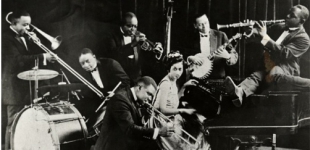
Joe King Oliver -
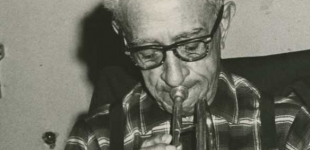
Peter Bocage
Links & Documents
-
-
Engage
What activities will lead students into finding answers through this line of inquiry?
Activity One
- Ask students to review the photographs included in this teaching strategy, and have a discussion about what life may have been like for musicians in the times that these photographs were taken.
- Ask students to listen to the oral history clip (in the “audio” section of the resources) and to read the transcription provided. In small groups, students will trace the tour that Peter Bocage describes.
- Each small group should create a visual presentation in map form, including the course of the tour and each city where the musicians stopped to play.
- While reviewing each group’s presentation, facilitate a discussion about what happens when musicians bring their music to other cities and towns. How might jazz have changed as it traveled upriver? What does jazz in Minnesota sound like today? What about jazz in New Orleans?
- Extension activity: Assign segments from the article provided (King Oliver: The Forgotten King of Jazz), to reinforce skills in navigating informational text, citing evidence, drawing conclusions, etc.
-
Connect
How do these investigations support other academic goals and objectives?
Curricular Connections Respond to individual and multiple texts by finding evidence, discussing, illustrating, and/or writing to reflect and make connections.
Interpret, synthesize, and evaluate information/findings in various print sources and media (e.g., fact and opinion, comprehensiveness of the evidence, bias, varied perspectives, motives and credibility of the author, date of publication) to draw conclusions and implications.
-
Reflect & Assess
How will you know what your students have learned?
Sample Reflection or Assessment Provide students with a blank map of the Bocage’s journey and ask them to label cities and towns mentioned on the route.
-
-
-
Explore
Which of these audio and visual resources will activate imagination and draw students into this investigation?
Photos
-
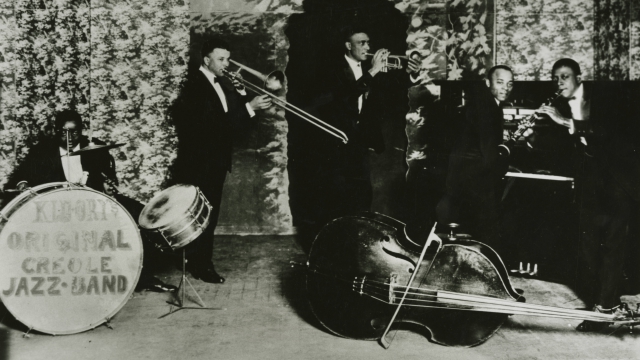
Kid Ory's Original Creole Jazz Band Courtesy of Hogan Jazz Archive, Tulane University -

King Oliverʼs Dixie Syncopators, 1926 Courtesy of Hogan Jazz Archive, Tulane University
Audio
Audio: Struttin With Some Barbecue, Louis Armstrong with the Hot 5 (KnowLouisiana)
Audio: I am going away to wear you off my mind, King Oliver Creole Jazz Band 1923 (KnowLouisiana)
Videos
Profiles
-

Edward "Kid" Ory -

Joe King Oliver -

Louis Armstrong "Satchmo" -
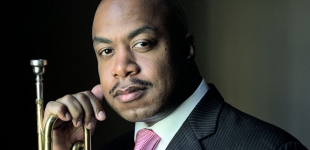
Nicholas Payton
Links & Documents
-
-
Engage
What activities will lead students into finding answers through this line of inquiry?
Activity One
- Ask students to read the article provided in the links section of this Teaching Strategy:Walking through Stardust: The final interview with Doc Cheatham and Nicholas Payton
- Facilitate a discussion about how jazz has been passed down to each generation.
- Ask students to trace the “musical genealogy” of Nicholas Payton, extending back before Doc Cheatham, to the musicians and bands who influenced Louis Armstrong. Students should also research those musicians who have been influenced by Payton.
- Utilize the audio and video links found in this and other teaching strategies to compare the musics of each generation. What do students notice about the evolution of the traditional jazz style, over time?
- Ask students to create a visual representation of Nicholas Payton’s musical family tree, adding in as many other musicians as they can find with whom he has connections.
-
Connect
How do these investigations support other academic goals and objectives?
Curricular Connections Recognize the defining characteristics of informational texts, speeches, and multimedia presentations (e.g., documentaries and research presentations) and elements of expository texts (e.g., thesis, supporting ideas, and statistical evidence); critically examine the argumentation and conclusions of multiple informational texts.
-
Reflect & Assess
How will you know what your students have learned?
Sample Reflection or Assessment Facilitate a discussion about the ways in which cultural traditions and artistic styles are influenced by artists and their peers.
-
-
-
Photos
-
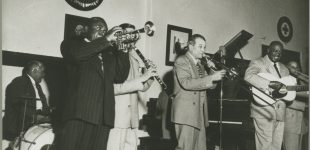
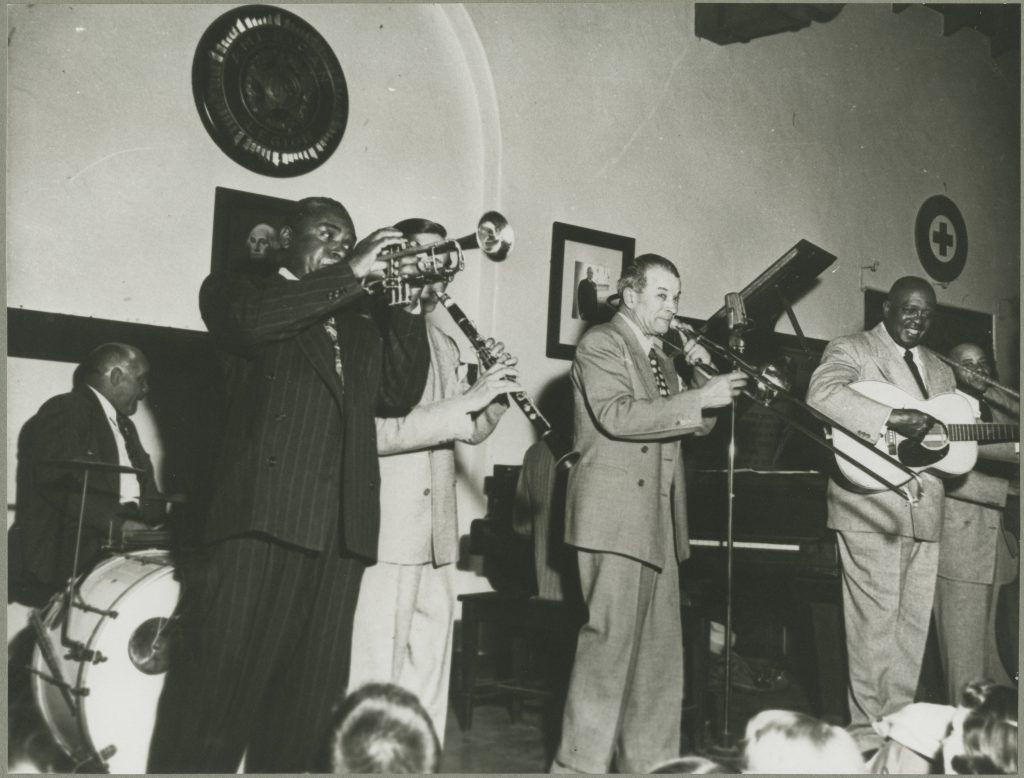
Kid Ory's Band Courtesy of Hogan Jazz Archive, Tulane University -
!['Papa' Albert French's Band Alvin Alcorn, Joseph 'Brother Cornbread' Thomas, Louis Barbarin, and Jeanette Kimball. Summer 1964 - [Dixieland Hall ?] Courtesy of Hogan Jazz Archive, Tulane University](https://musicrising.tulane.edu/wp-content/uploads/sites/3/2018/10/traditional-jazz-19-310x150.jpg)
!['Papa' Albert French's Band Alvin Alcorn, Joseph 'Brother Cornbread' Thomas, Louis Barbarin, and Jeanette Kimball. Summer 1964 - [Dixieland Hall ?] Courtesy of Hogan Jazz Archive, Tulane University](https://musicrising.tulane.edu/wp-content/uploads/sites/3/2018/10/traditional-jazz-19-819x1024.jpg)
'Papa' Albert French's Band Alvin Alcorn, Joseph 'Brother Cornbread' Thomas, Louis Barbarin, and Jeanette Kimball. Summer 1964 - [Dixieland Hall ?] Courtesy of Hogan Jazz Archive, Tulane University -
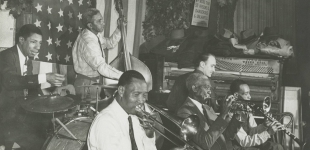
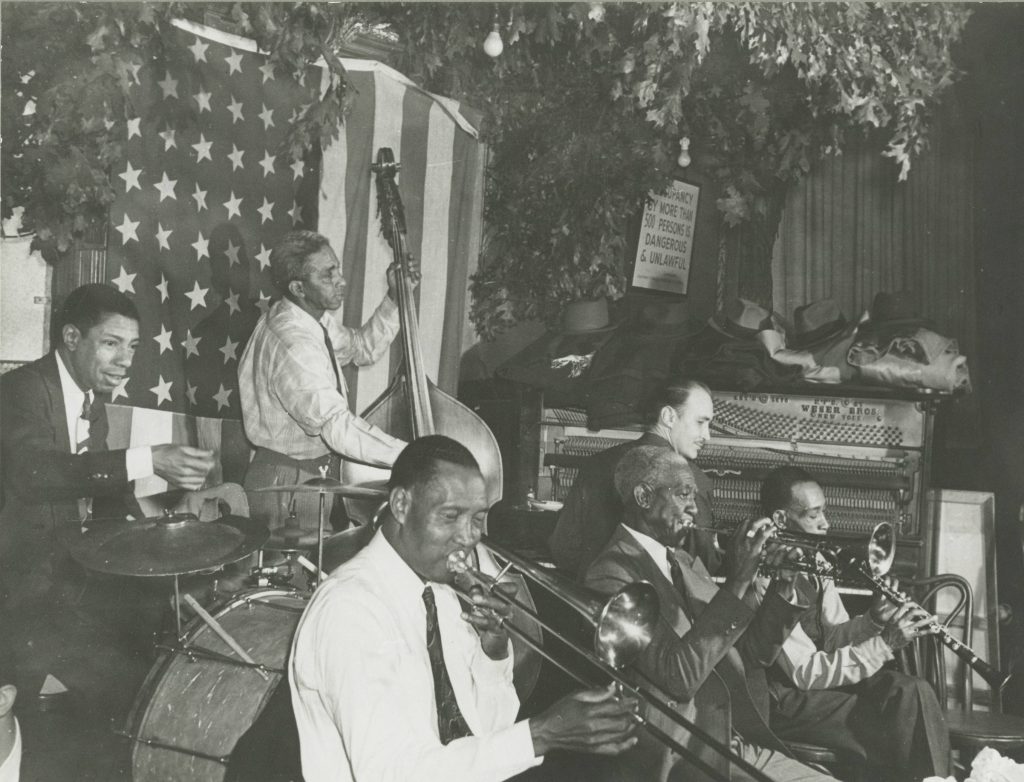
Bunk Johnson Band, Kaiser Marshall, d, Alcide 'Slow Drag' Pavageau, b, Jim Robinson, tb, Bunk Johnson, tp, Don Ewell, George Lewis. 1946 Courtesy of Hogan Jazz Archive, Tulane University -
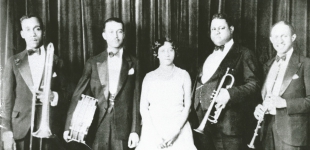
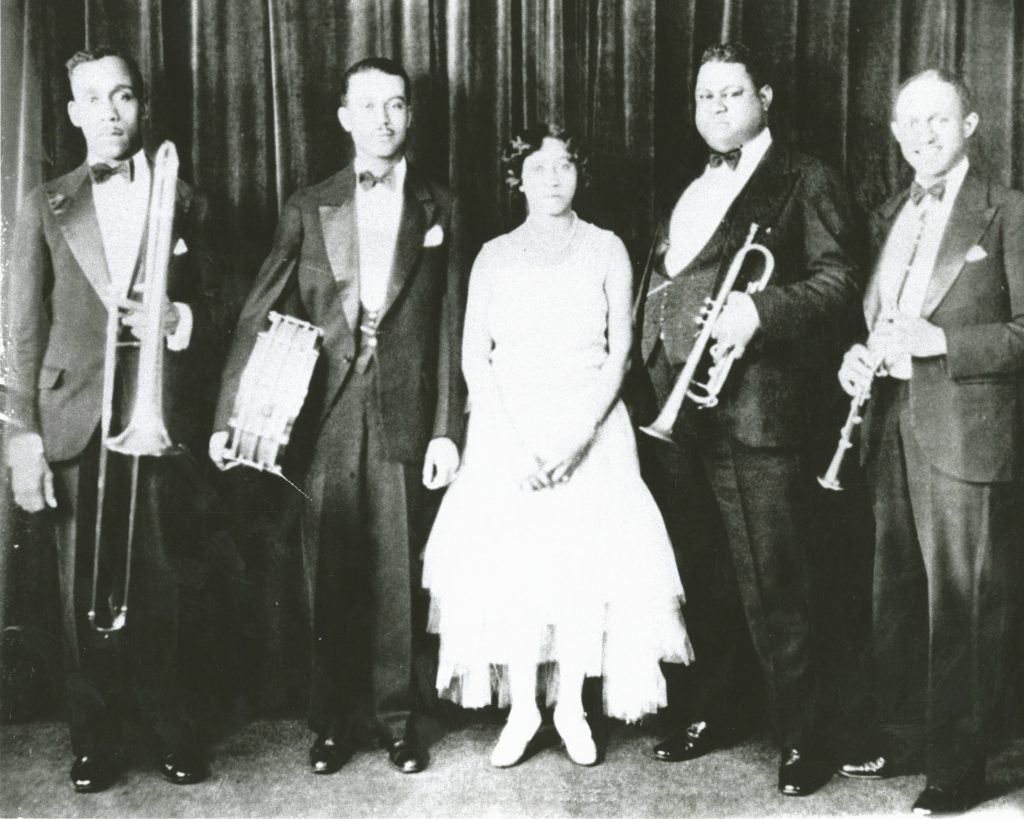
Freddie Keppard Band; Lil Hardin, 3rd from left; Freddie Keppard, 4th from left. Courtesy of Hogan Jazz Archive, Tulane University
Traditional Jazz Line of InquiryWhat role does each instrument play in this tradition, and how do musicians interact with each other during performance?
Videos
Audio
Profiles

Preservation Hall Jazz Band 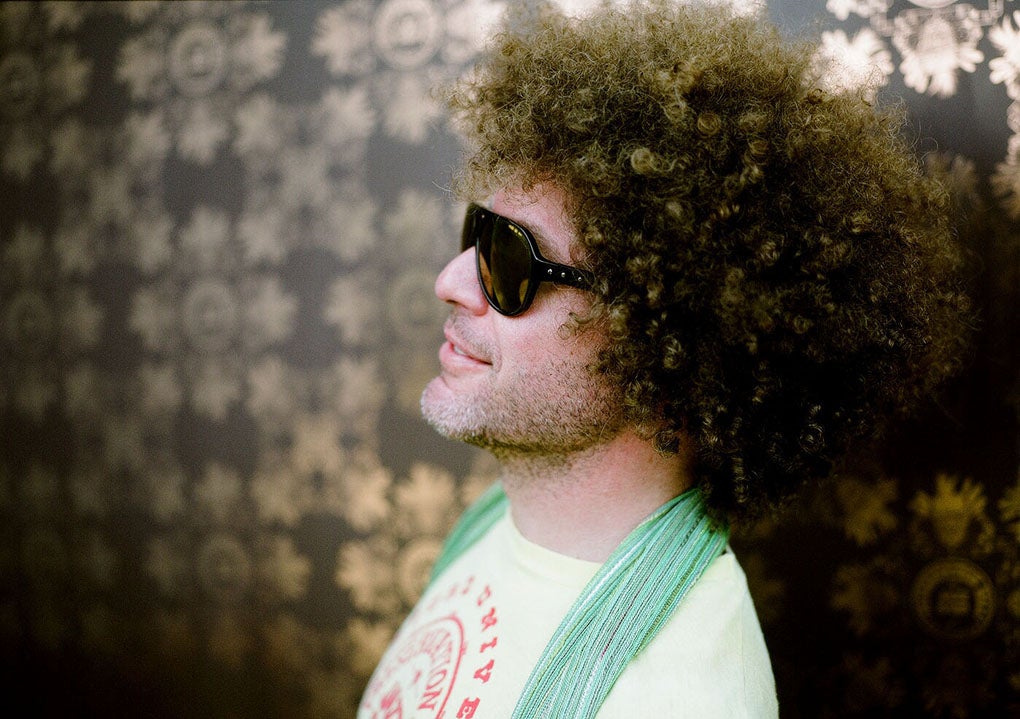
Ben Jaffe 
Jeanette Kimball 
Papa Celestin 
Edward "Kid" Ory 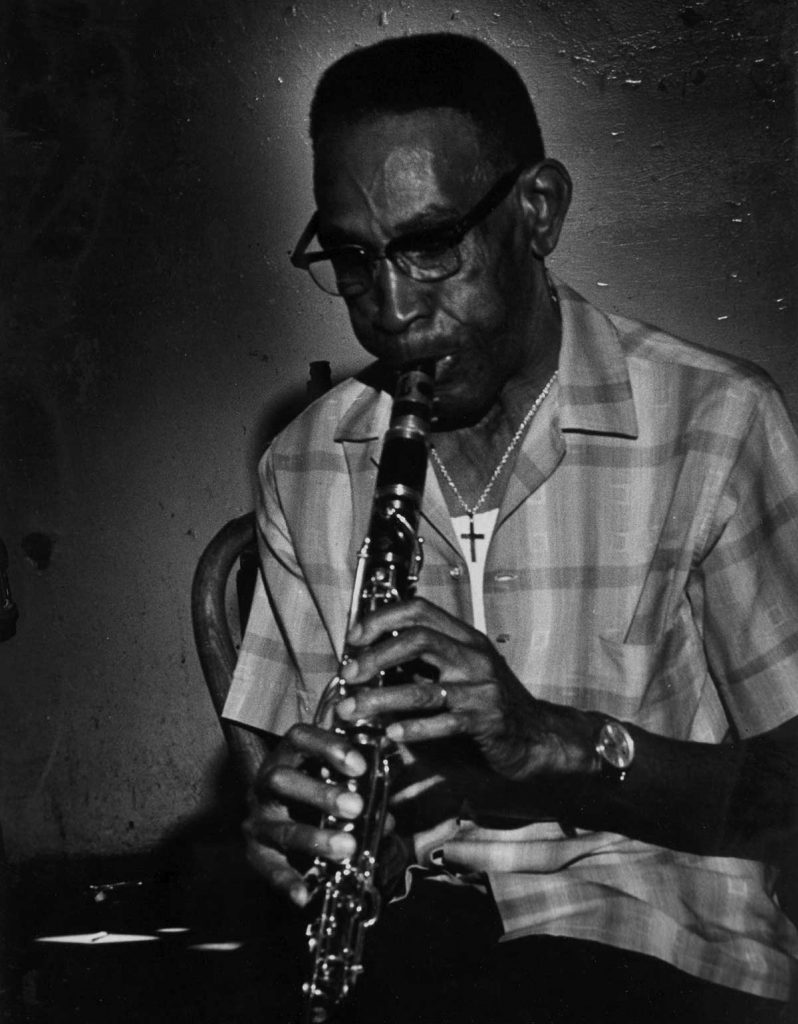
George Lewis 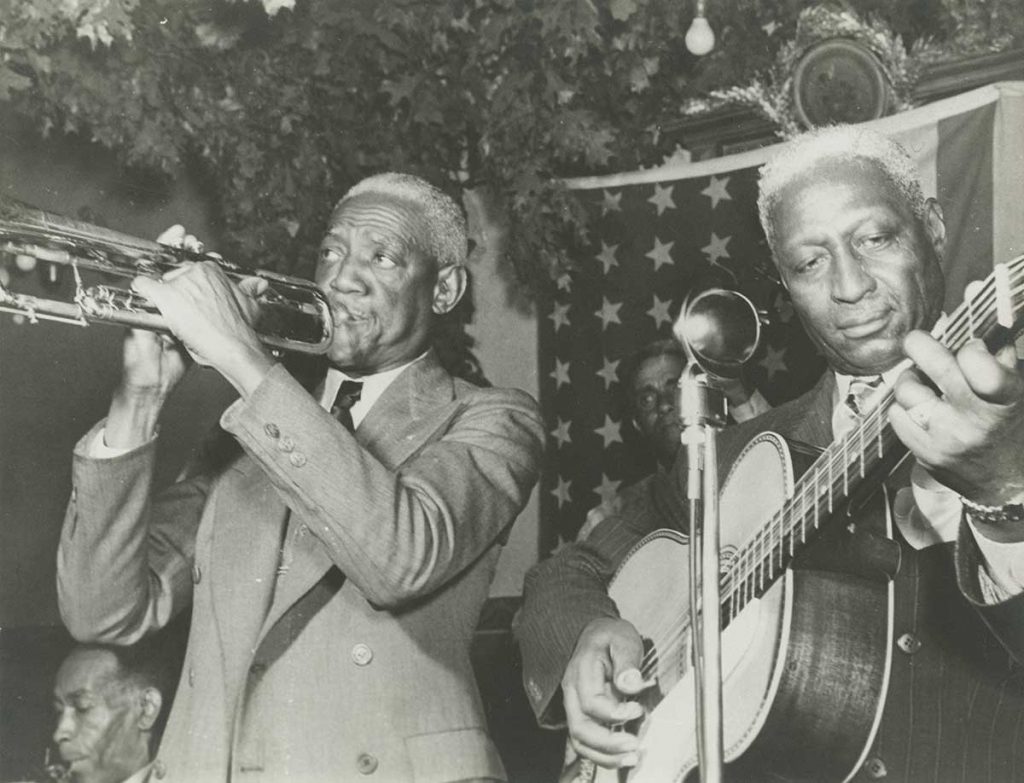
William "Bunk" Johnson 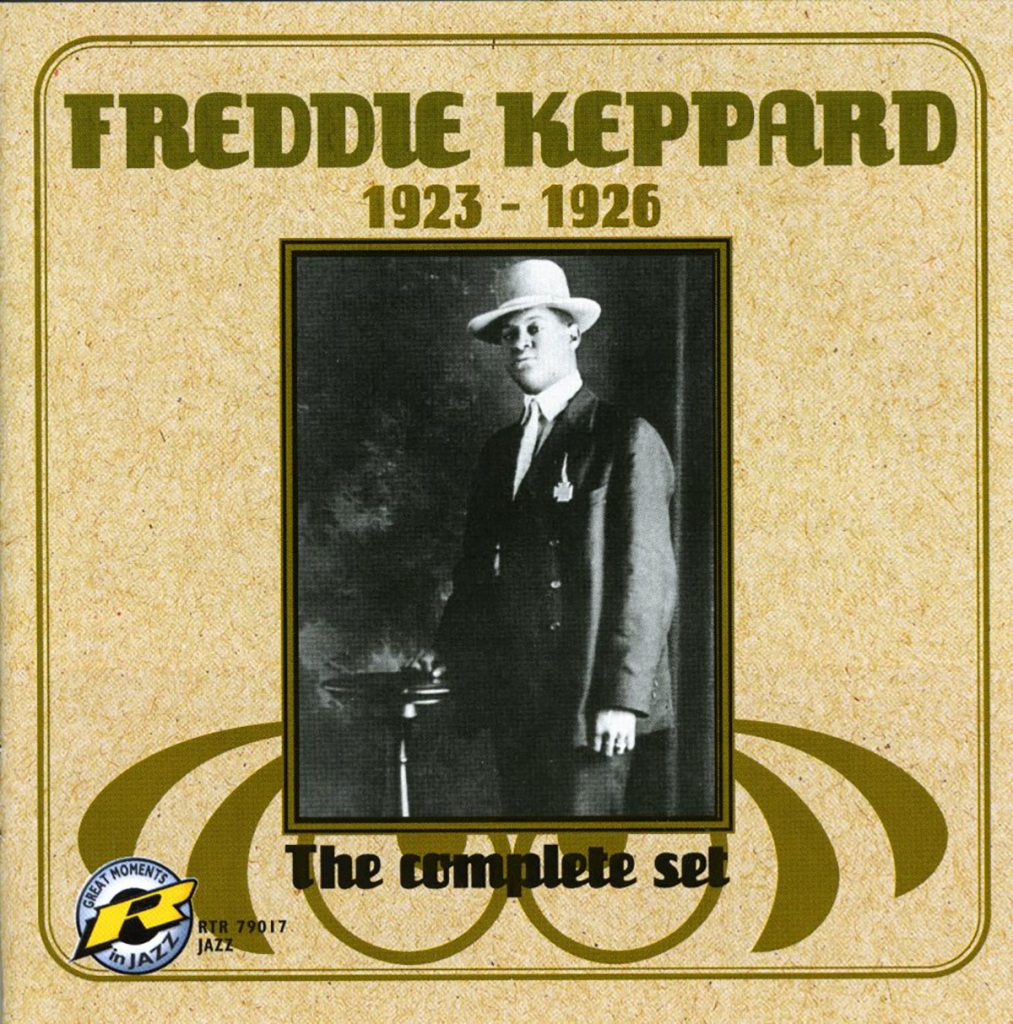
Freddie Keppard 
Joe King Oliver 
Lil Hardin Armstrong 
Louis Armstrong "Satchmo" 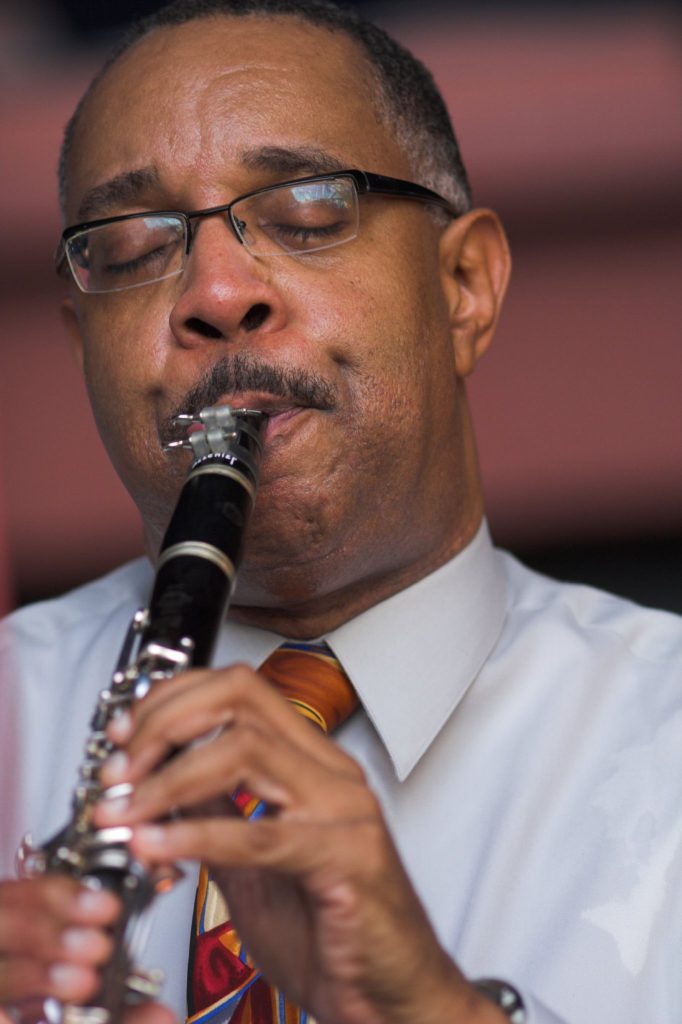
Dr. Michael White
Links & Documents
Teaching Strategies
-
-
Explore
Which of these audio and visual resources will activate imagination and draw students into this investigation?
Photos
-

'Papa' Albert French's Band Alvin Alcorn, Joseph 'Brother Cornbread' Thomas, Louis Barbarin, and Jeanette Kimball. Summer 1964 - [Dixieland Hall ?] Courtesy of Hogan Jazz Archive, Tulane University -

Papa Celestin's Original Tuxedo Orchestra; Jeanette Kimball, Joseph Thomas ('Brother Cornbread or 'Empty Mouth'), Sidney 'Jim Little' Brown, Albert French, Albert 'Fernandez' Walters, Louis Barbarin, Wendell Eugene. Dan's Pier 600, New Orleans, LA. circa 1959 Courtesy of Hogan Jazz Archive, Tulane University
Audio
Videos
Profiles
-
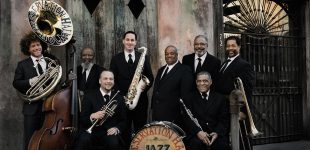
Preservation Hall Jazz Band -

Ben Jaffe -

Jeanette Kimball -

Papa Celestin
Links & Documents
-
-
Engage
What activities will lead students into finding answers through this line of inquiry?
Activity One
In the early or traditional style of Jazz in New Orleans, there is the front line (cornet or trumpet, clarinet, trombone) and the rhythm section (piano, guitar or banjo, bass/tuba, and drums).
- Using the worksheets provided, help students differentiate instruments by their appearance, and the sound they might make. What does a musician need to do to play each one?
- Introduce the terms “front line” and “rhythm section,” (What’s rhythm? What’s “front line?”), and ask students to consider which instruments might fit into which role.
- Begin with some focused, careful noticing of the two photographs provided in the toolbox. What instruments do the students see? How are they arranged on stage? Which seem to be the front line?
- Next, move to the video of the Original Tuxedo Jazz Band, and ask students if their opinion is changing at all.
- Provide students with an image of the Preservation Hall Jazz Band, ask them to listen to some of the musical examples provided on the Preservation Hall Website. They should “track” which instrument they think they are hearing, much like we would track the speaker in class, and they can write notes about what they are hearing.
-
Connect
How do these investigations support other academic goals and objectives?
Curricular Connections L.CN.05.04 recognize and analyze the various roles of the communication process (e.g., to persuade, critically analyze, entertaining
versus informative, different interpretations or perspectives of an action or event) in focusing attention on events and shaping opinions -
Reflect & Assess
How will you know what your students have learned?
Sample Reflection or Assessment Generate a list of all of the things that students noticed in the music, and compare to a list of elements they noticed in shared reading. Emphasize that careful listening and noticing the music helps us also become stronger readers and writers.
-
-
-
Explore
Which of these audio and visual resources will activate imagination and draw students into this investigation?
Photos
-

Jeanette Kimball Courtesy of Hogan Jazz Archive, Tulane University -

Kid Ory's Band Courtesy of Hogan Jazz Archive, Tulane University -
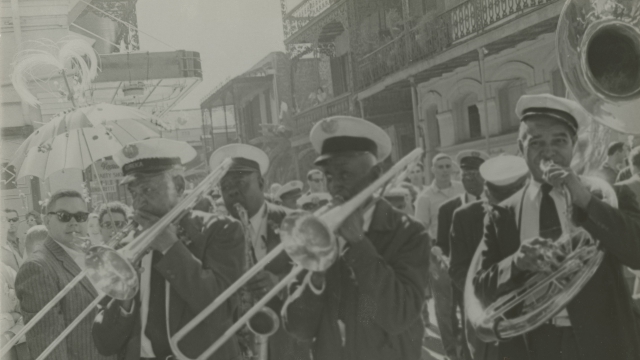
Eureka Brass Band; Parade from Preservation Hall to Royal Garden in the French Quarter. At left with sunglasses, striped suit, & tasseled umbrella is Dick Allen; musicians: Albert Warner, Andrew Morgan, Oscar "Chicken" Henry, Robert Lewis, and Wilbert Tillman. Willie Humphrey partially visible, with head bent down. 1961 Courtesy of Hogan Jazz Archive, Tulane University -
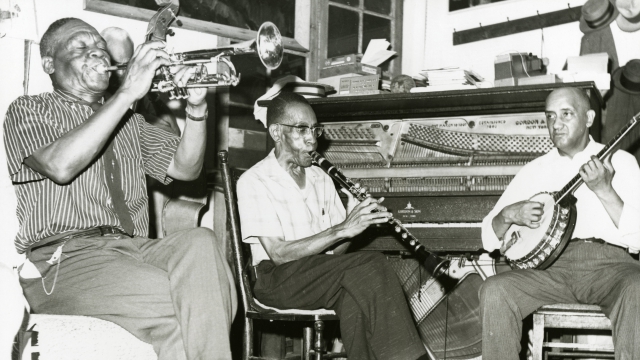
Punch Miller's Band at Preservation Hall. Punch Miller, tp, John Joseph, b, George Lewis, cl, Manuel Sayles, bj at Preservation Hall. 1964 Courtesy of Hogan Jazz Archive, Tulane University -
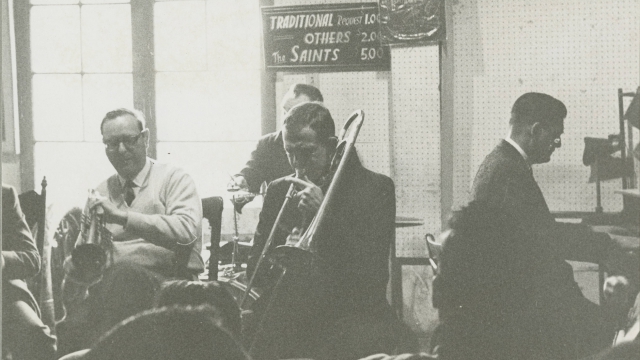
Crawford-Ferguson Night Owls at Preservation Hall; Raymond Burke, cl, Jack Bachman, tp, Leonard Ferguson, d, and Paul Crawford, tb, and Stanley Mendelson, p; Sunday afternoon concert at Preservation Hall. 1963 Courtesy of Hogan Jazz Archive, Tulane University -
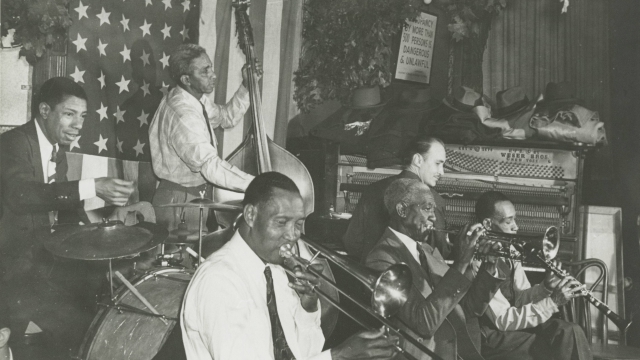
Bunk Johnson Band, Kaiser Marshall, d, Alcide 'Slow Drag' Pavageau, b, Jim Robinson, tb, Bunk Johnson, tp, Don Ewell, George Lewis. 1946 Courtesy of Hogan Jazz Archive, Tulane University -
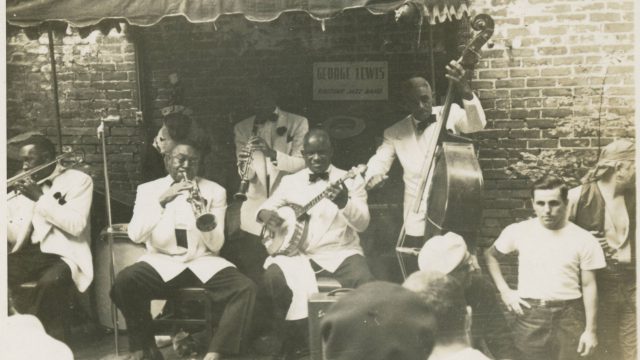
George Lewis Ragtime Jazz Band; Jim Robinson, tb, Elmer Talbert, tp, George Lewis, cl, [Freddie King ?] , d, Nick Gagliano, manager, Lawrence Marrero, bj, and Alcide “Slow Drag” Pavageau, b. 1950 Courtesy of Hogan Jazz Archive, Tulane University
Profiles
-

Edward "Kid" Ory -
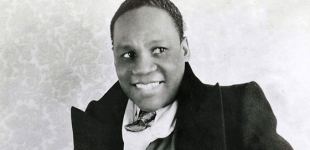
Ernest "Punch" Miller -
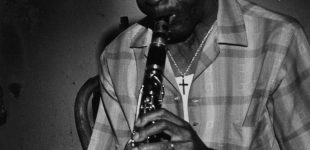
George Lewis -

Jeanette Kimball -
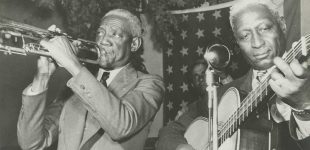
William "Bunk" Johnson
Links & Documents
-
-
Engage
What activities will lead students into finding answers through this line of inquiry?
-
Connect
How do these investigations support other academic goals and objectives?
Curricular Connections R.IT.06-08.01 analyze the structure,
elements, features, style, purpose of
7 – persuasive essay, research report,
brochure, personal correspondence,
autobiography and biography. -
Reflect & Assess
How will you know what your students have learned?
-
-
-
Explore
Which of these audio and visual resources will activate imagination and draw students into this investigation?
Photos
-
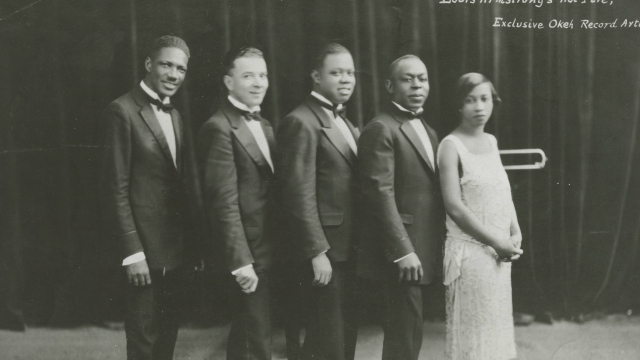
Louis Armstrong's Hot Five; Johnny St. Cyr, bj, Edward "Kid" Ory, Louis Armstrong, Johnny Dodds, Lil Hardin Armstrong. 1926 Courtesy of Hogan Jazz Archive, Tulane University -
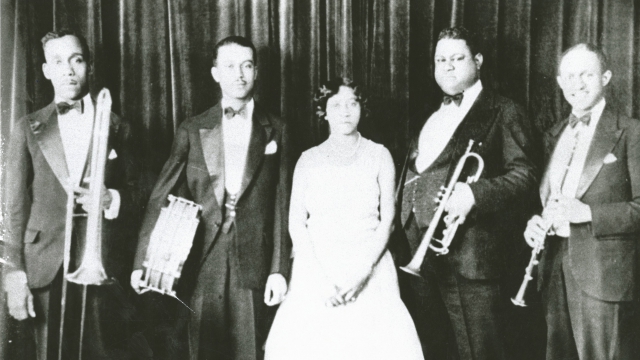
Freddie Keppard Band; Lil Hardin, 3rd from left; Freddie Keppard, 4th from left. Courtesy of Hogan Jazz Archive, Tulane University -
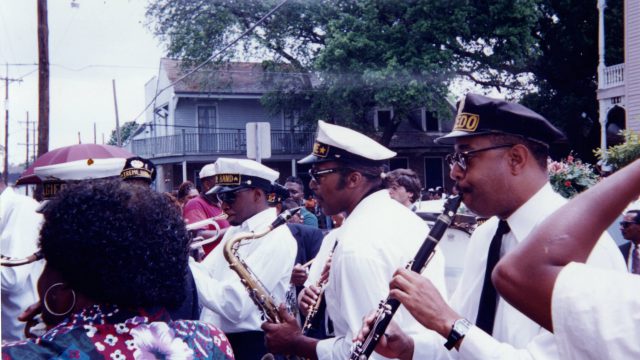
Michael White; Funeral of Milford Dolliole. Michael White cl; Others unidentified. In front of St. Augustin Church. Courtesy of Hogan Jazz Archive, Tulane University -
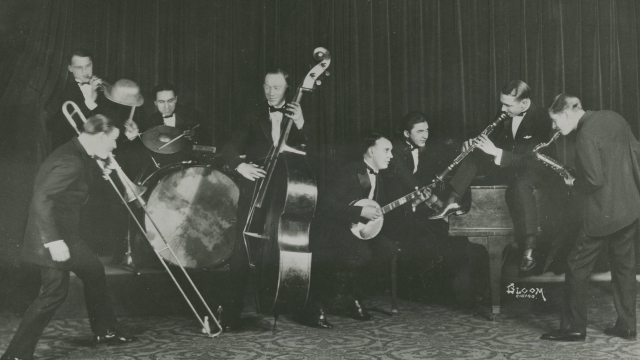
New Orleans Rhythm Kings Courtesy of Hogan Jazz Archive, Tulane University -

King Oliverʼs Creole Jazz Band Courtesy of Hogan Jazz Archive, Tulane University
Audio
Videos
Profiles
-

Dr. Michael White -
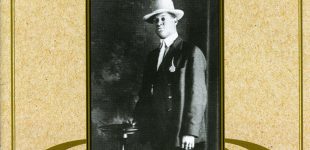
Freddie Keppard -

Joe King Oliver -

Lil Hardin Armstrong -

Louis Armstrong "Satchmo"
-
-
Engage
What activities will lead students into finding answers through this line of inquiry?
-
Connect
How do these investigations support other academic goals and objectives?
Curricular Connections K1.6 Analyze events and circumstances from the vantage point of others.
CE 1.4.4 Interpret, synthesize, and evaluate information/findings in
various print sources and media (e.g., fact and opinion,
comprehensiveness of the evidence, bias, varied perspectives, motives
and credibility of the author, date of publication) to draw conclusions
and implications. -
Reflect & Assess
How will you know what your students have learned?
-
-
